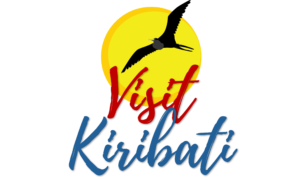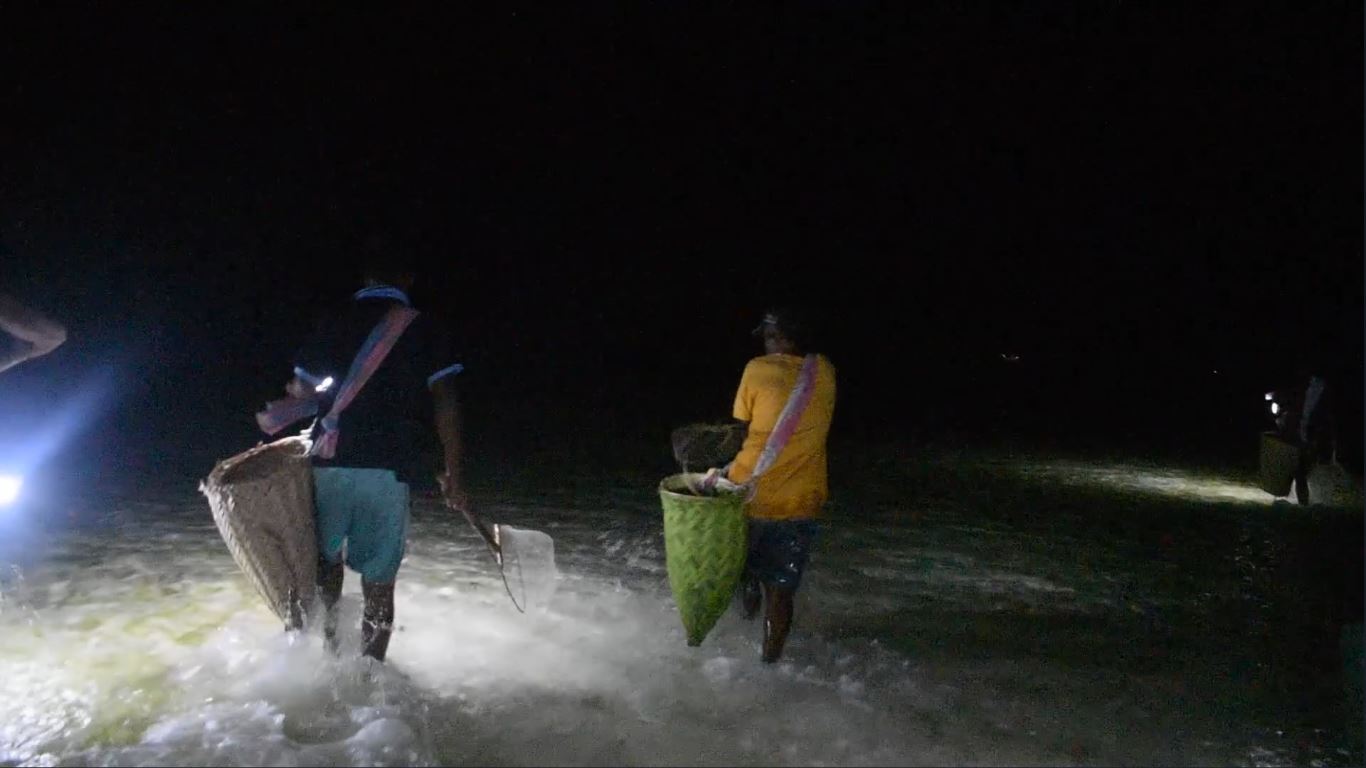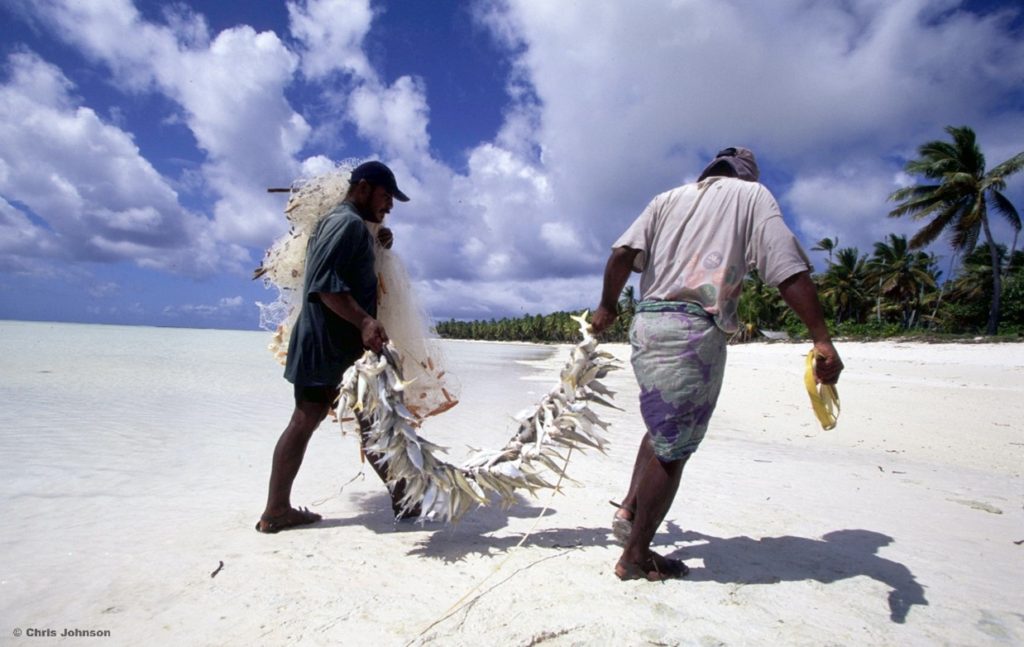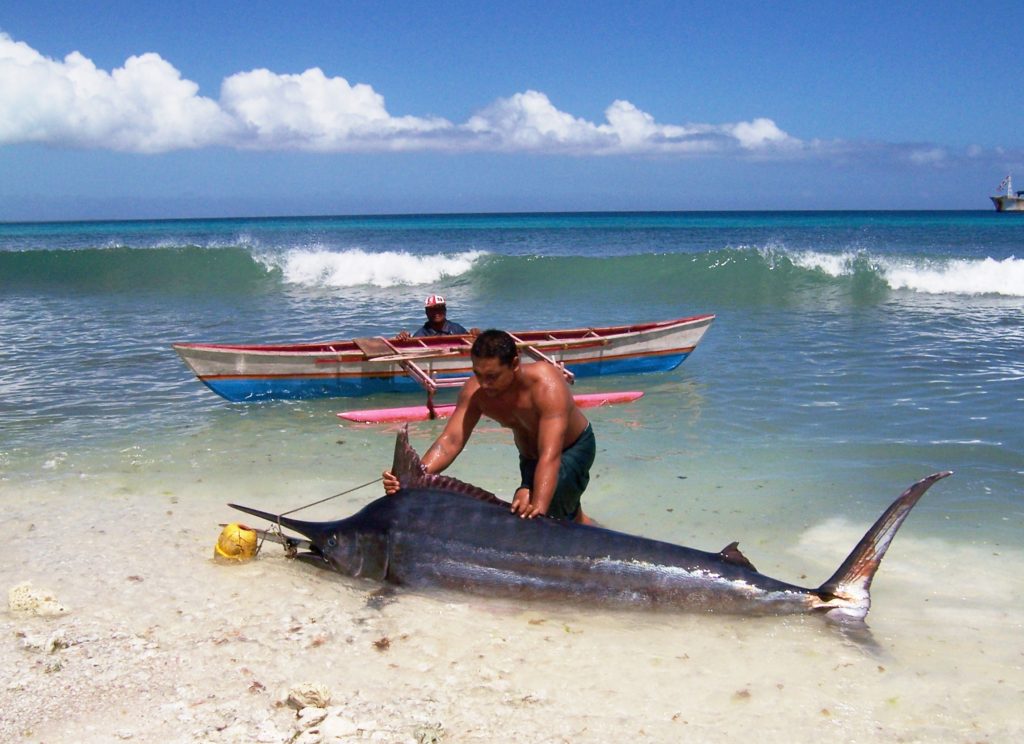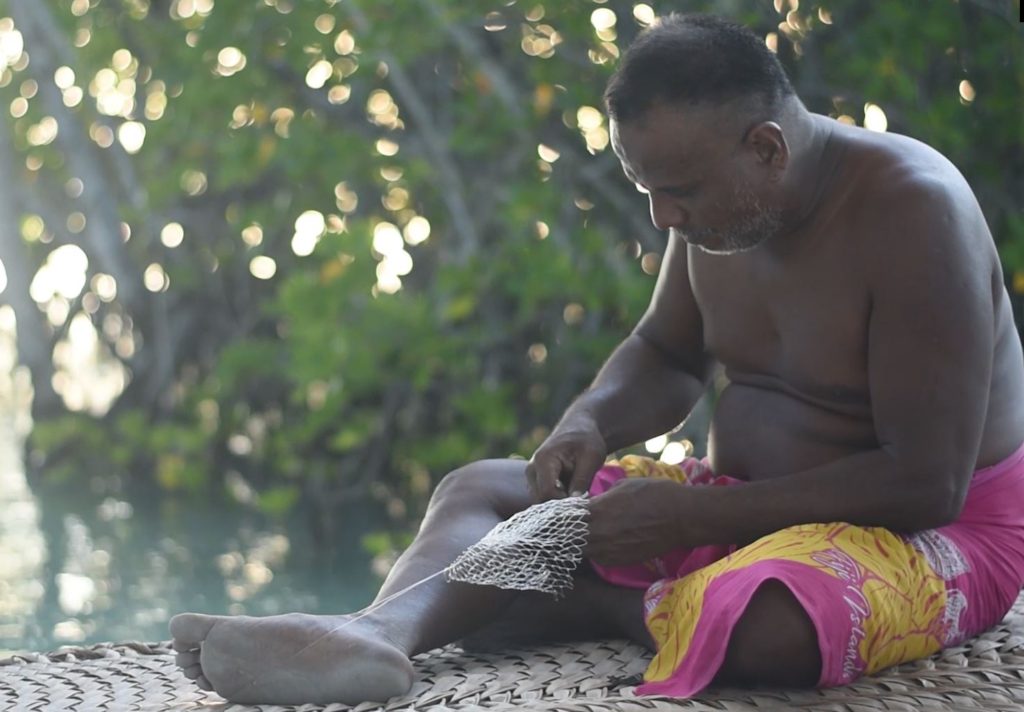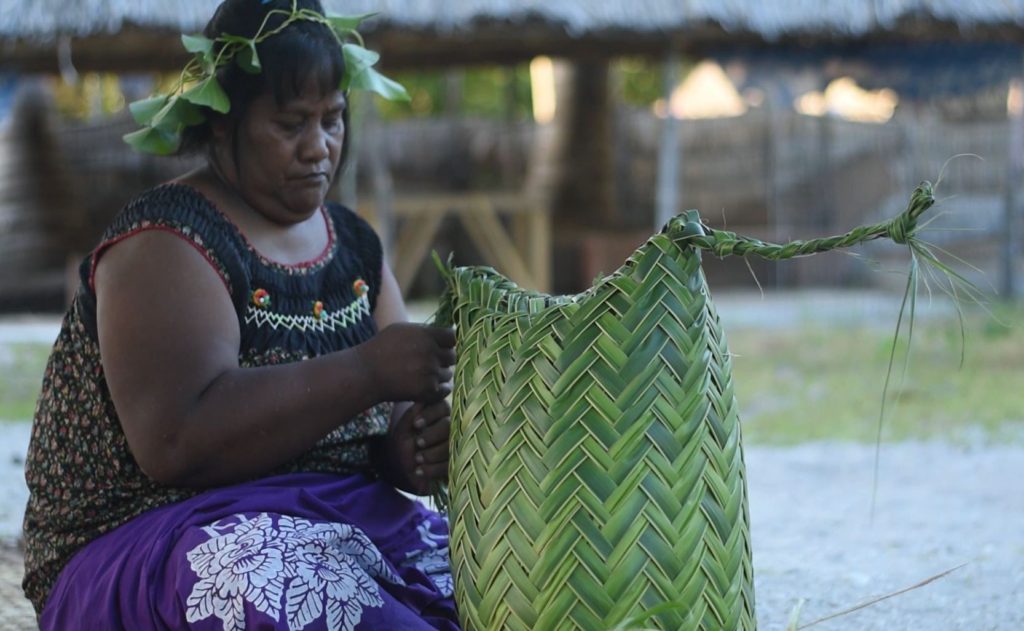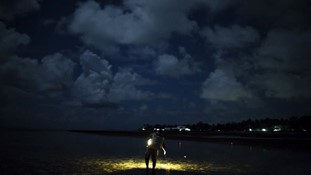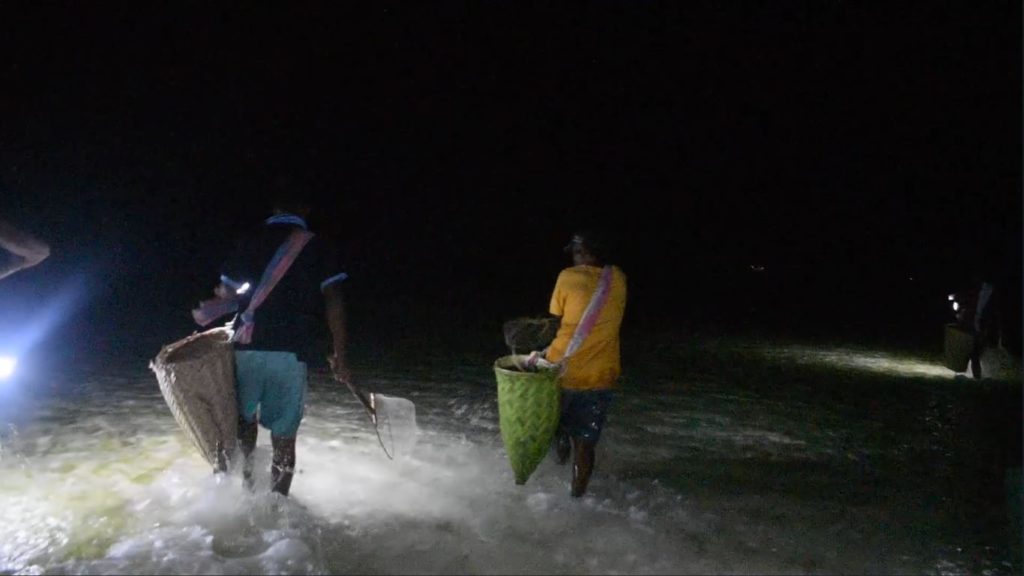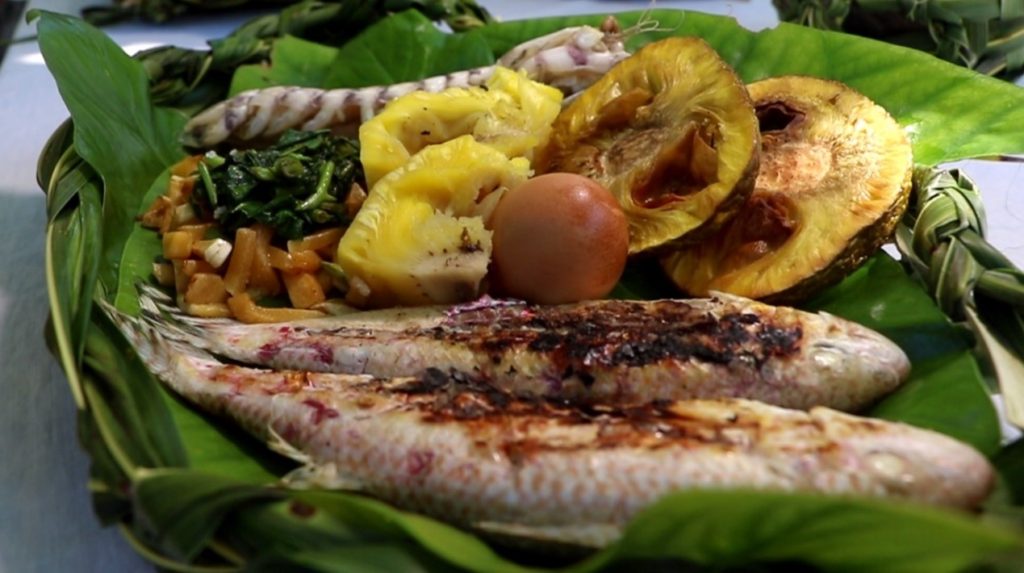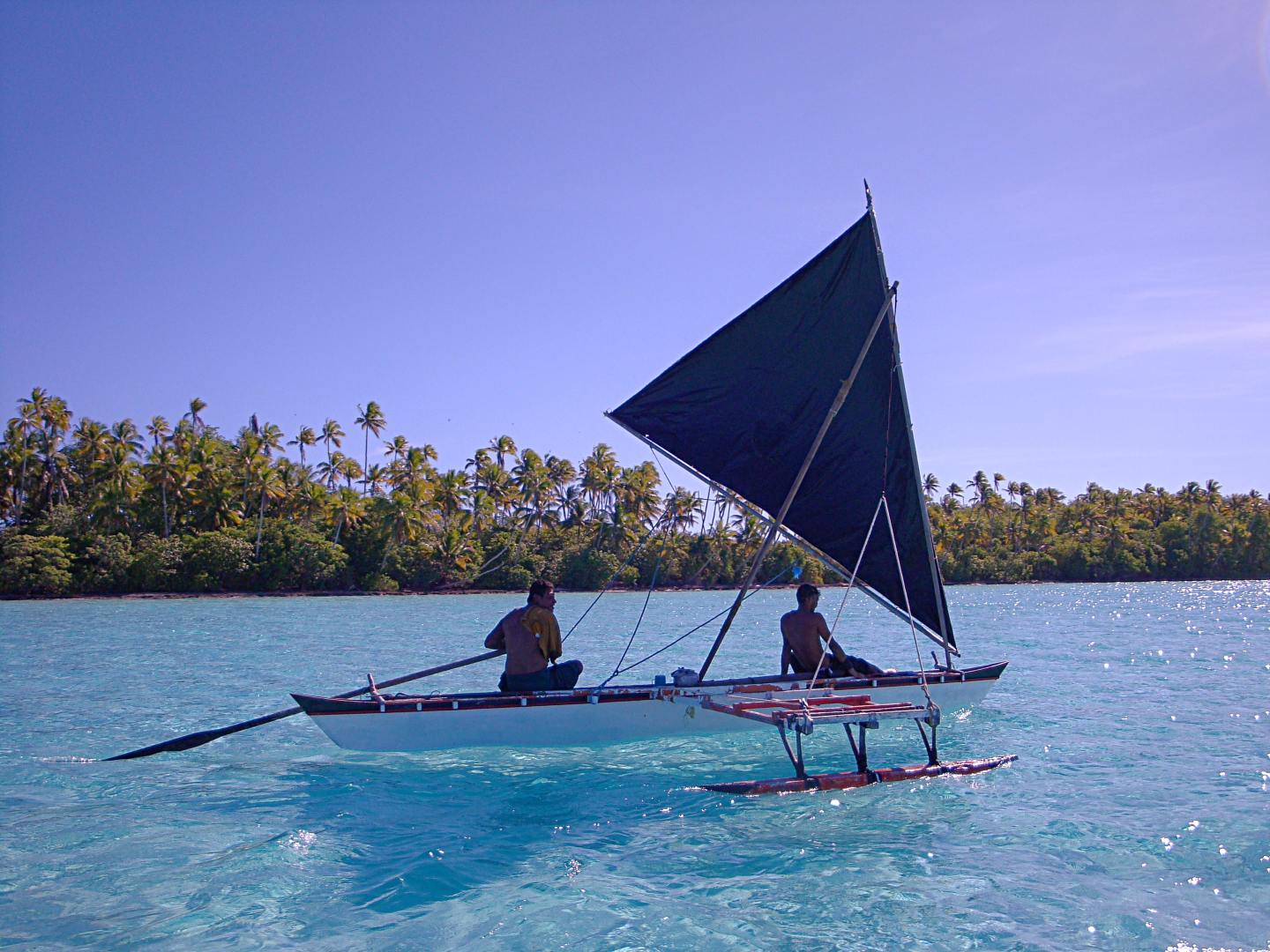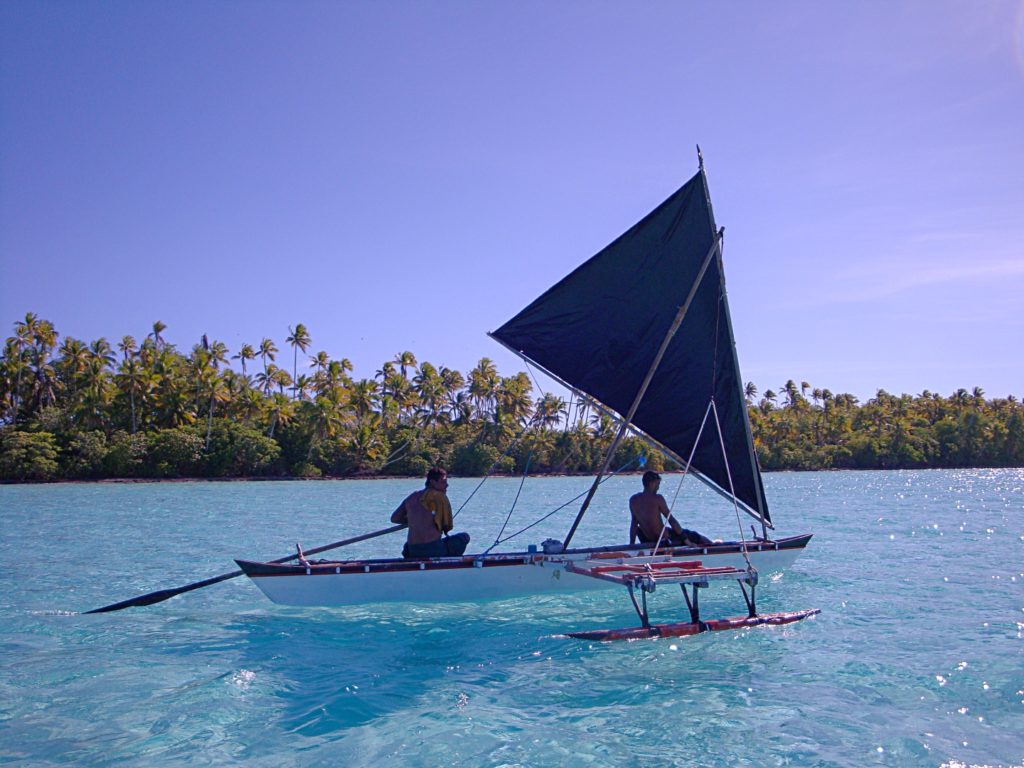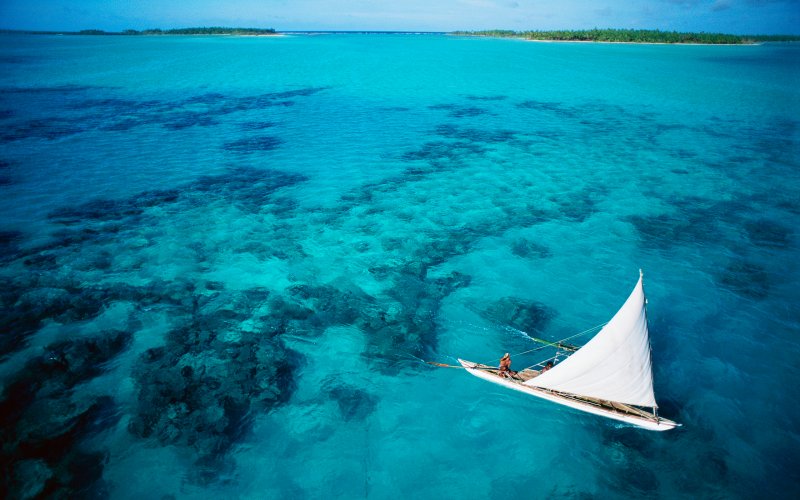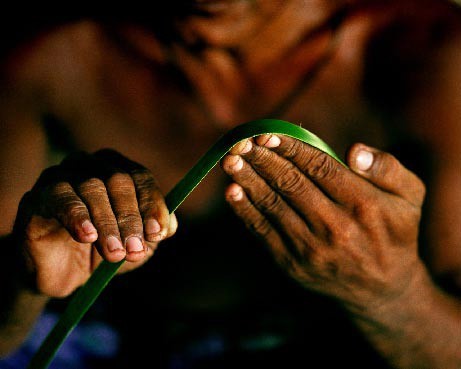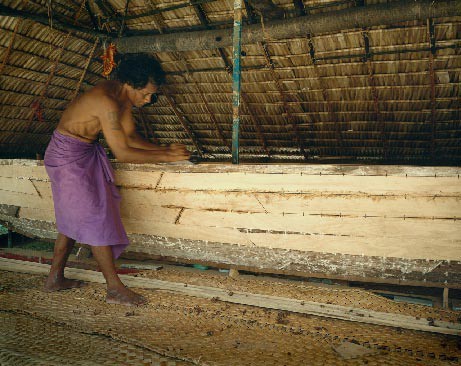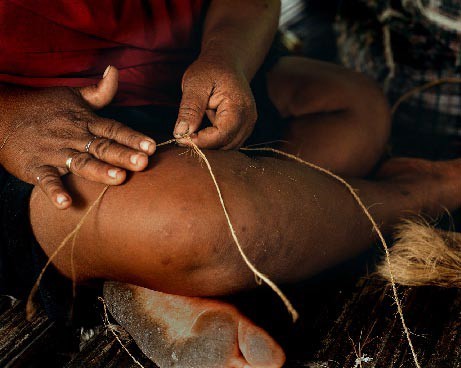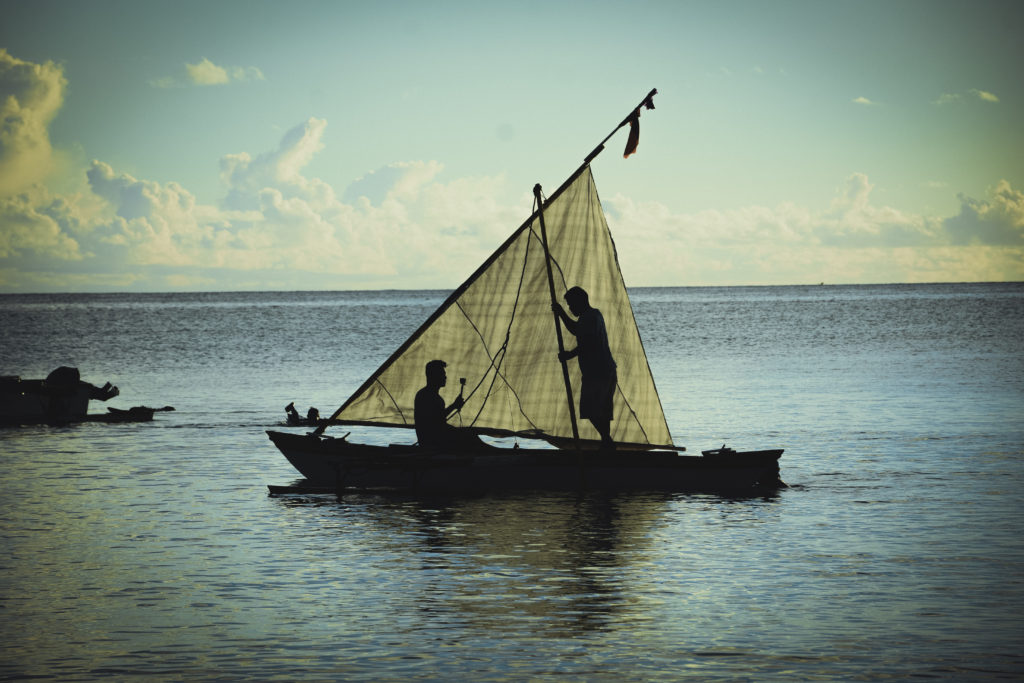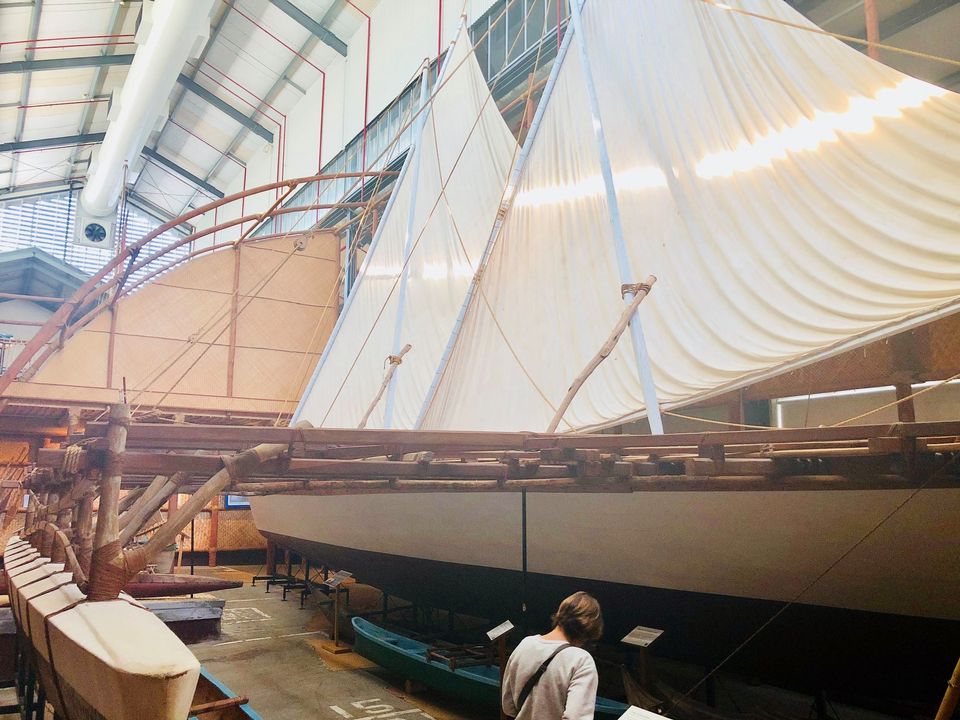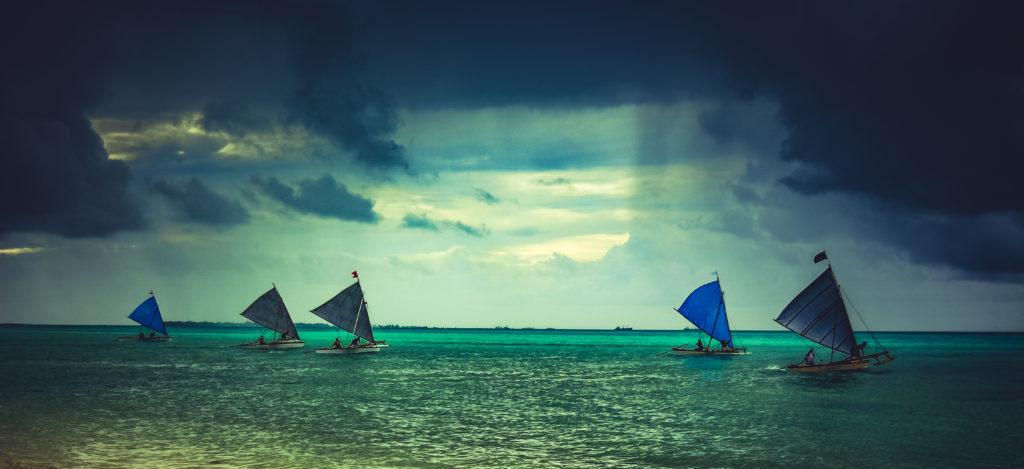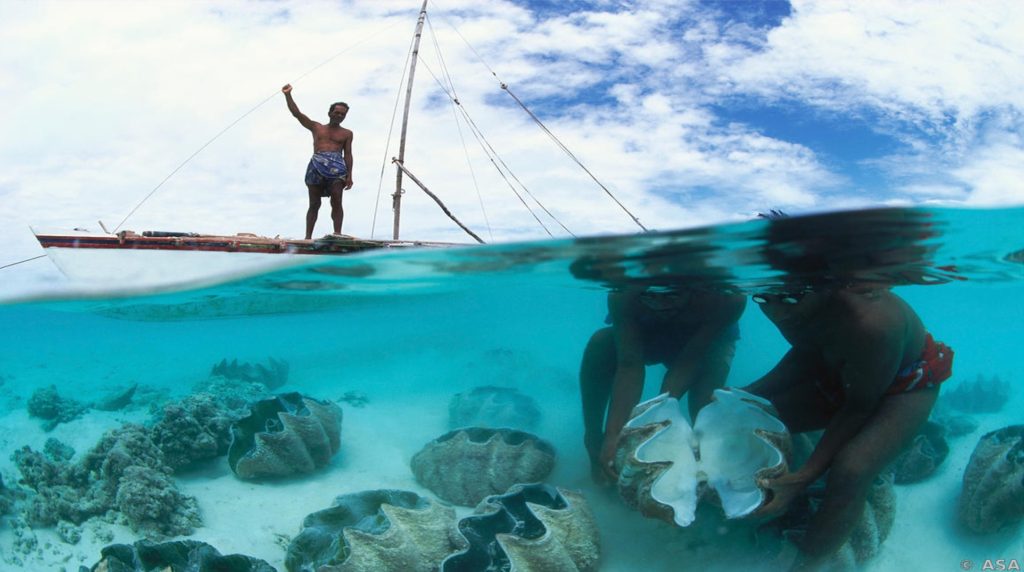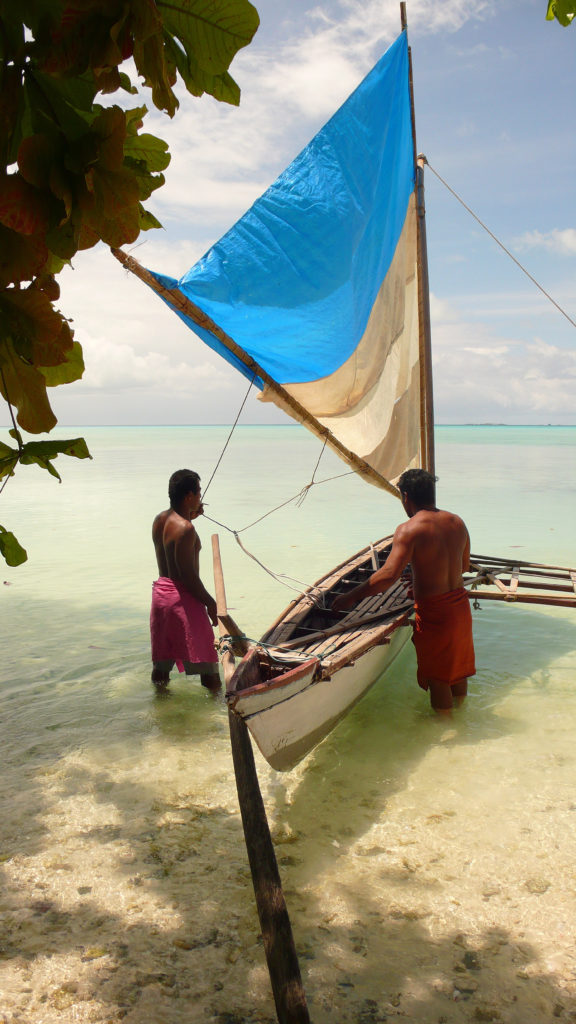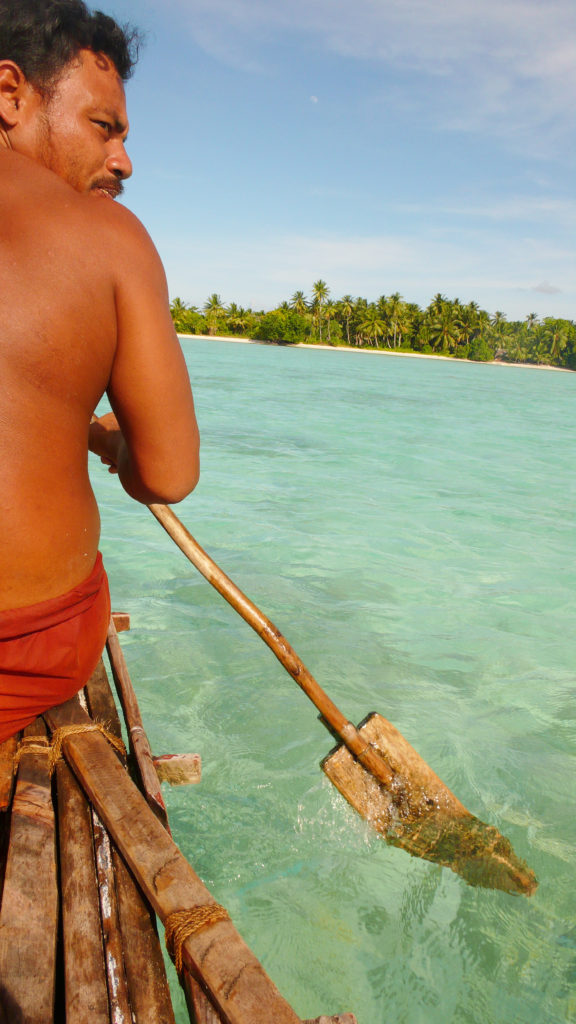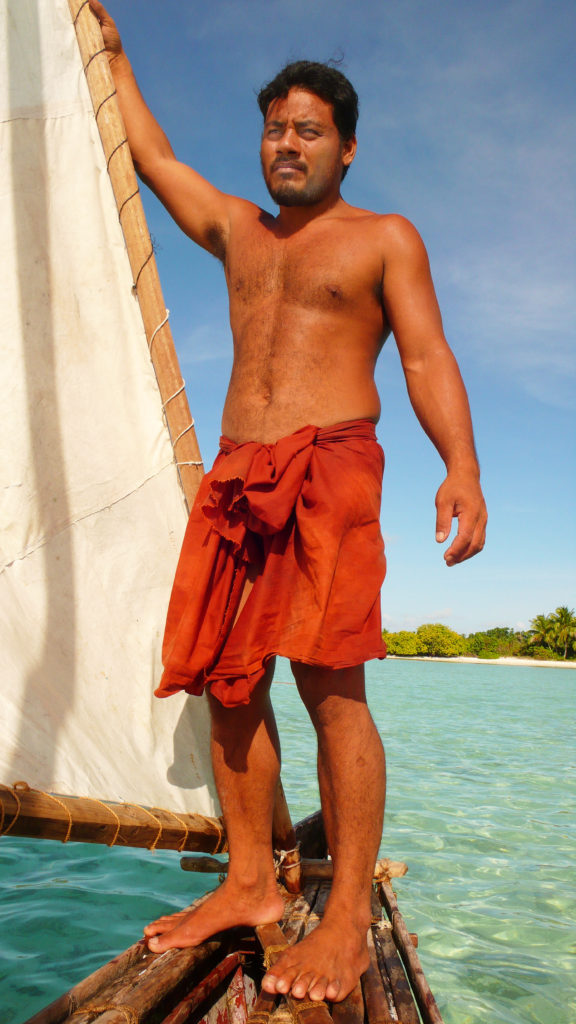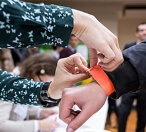
Community-Based Tourism
A Sustainable Tourism Initiative
Nonouti Island Community - Based Tourism Tour
Over the last 12 months, our Tourism Officer – Product Development, Nei Kiarake Karuaki has made numerous trips to the Southern Gilbert group island of Nonouti to introduce the concept of Sustainable Community-Based Tourism (CBT) to communities and local organisations on the island. These trips included scoping for potential CBT sites, soliciting community interest to participate in the initiative and the provision of tourism support and training for these remote island communities.
Supported by the LDCF -1 Food Security Project funded by the Global Environment Facility (GEF) through the UNDP and managed by the Environment and Conservation Division (ECD) under the MELAD, this CBT initiative attracted the interest of 3 communities, local fishing guides and supported by the Nonouti Island Council.
After arriving into Tarawa on a Fiji Airways flight from Nadi, Fiji, I joined a delegation of senior government officials on a familiarisation trip to the island to experience what has culminated from months of work with selected Nonouti island communities.
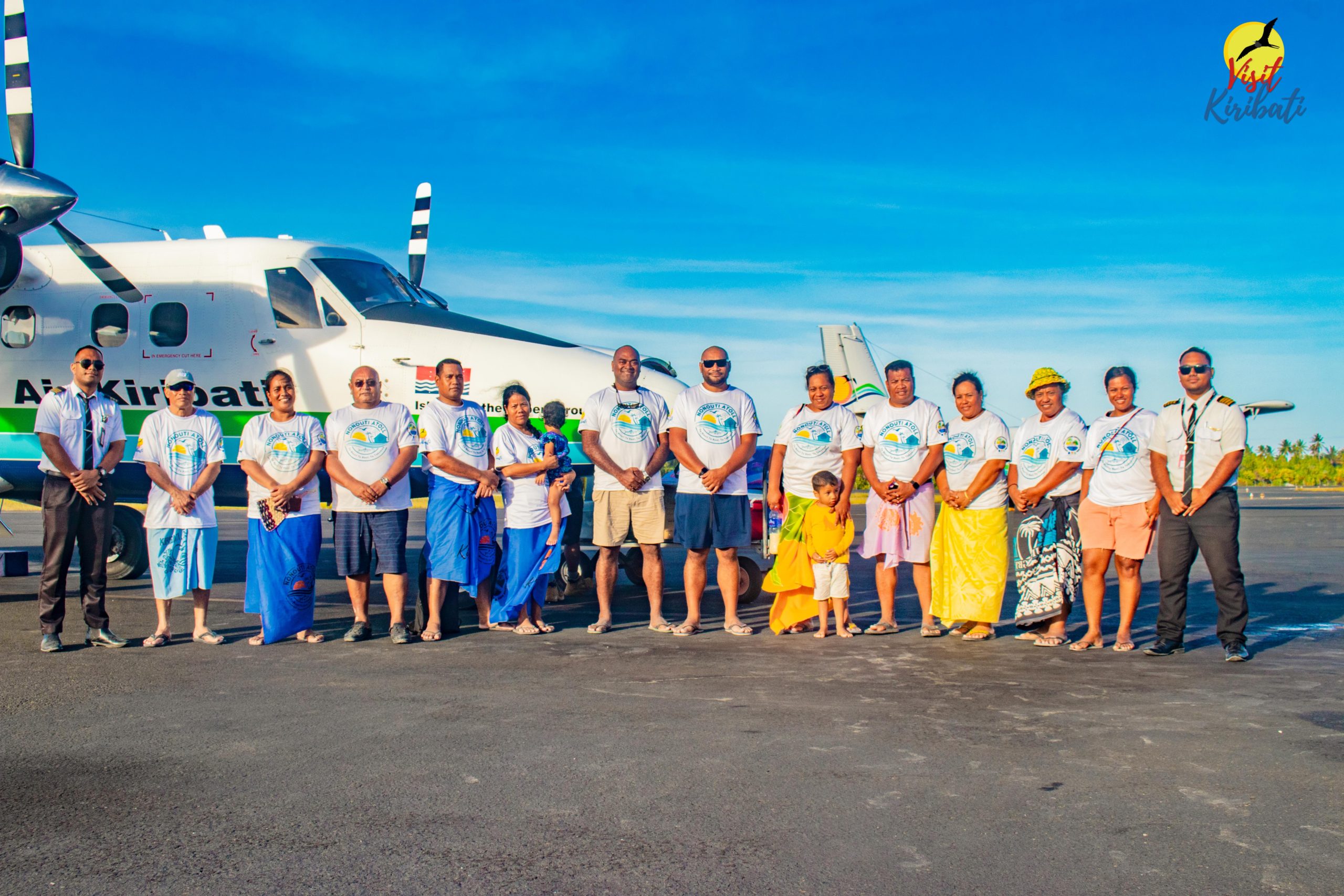
Air Kiribati - connecting the outer islands of Kiribati
Through the project, we charted an Air Kiribati flight to Nonouti. As would be expected, check-in was quite exclusive to our small contingent of adventure seekers, all keen to experience Nonouti as a traveller.
50 minutes after take-off from Bonriki International Airport, as we descended onto Nonouti, I could not help but marvel at the tranquil sight of the island’s turquoise lagoon and islets that appeared as beads on the Northern end of the atoll.
Arriving to a traditional Kiribati welcome in the newly constructed maneaba next to the Nonouti airport terminal made for a special experience. The dance and ‘light’ (but abit on the sumptuous heavy side) refreshment reassured me that my plans for a more controlled diet in 2023 will now be out the window, at least during my 4 days in Nonouti.
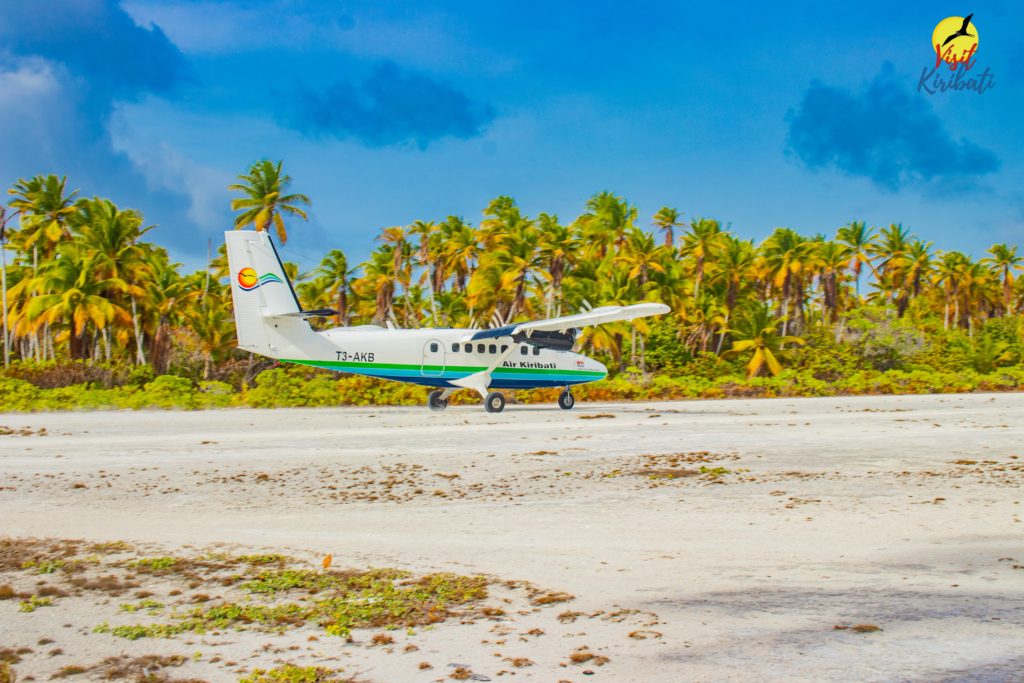
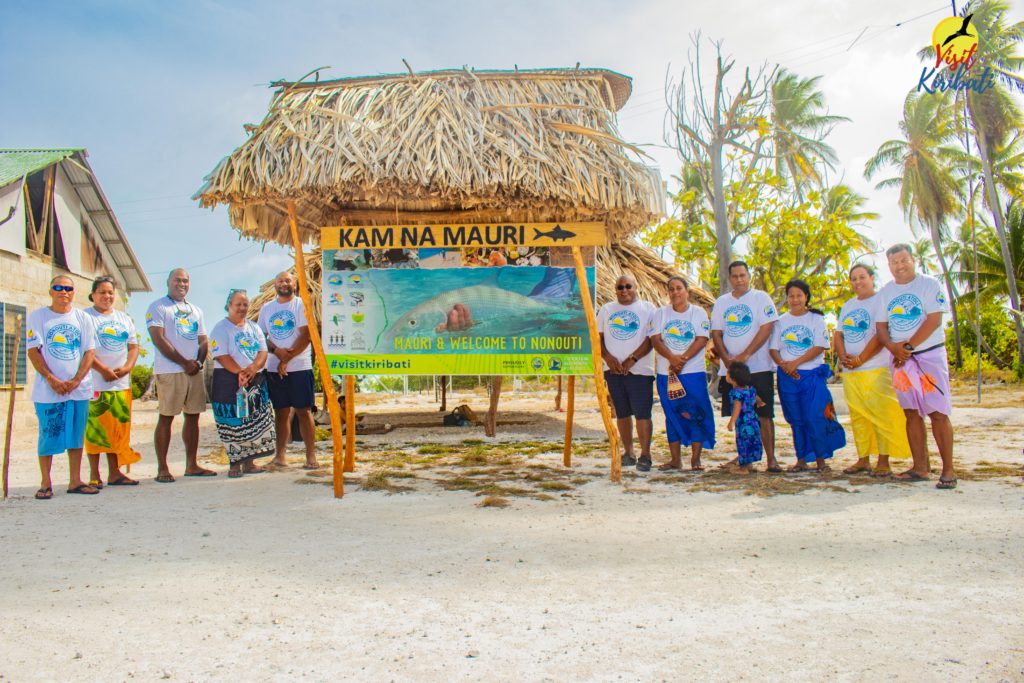
From the airport, it was a 30-minutes open truck (with canopy and mats) ride to our accommodation.
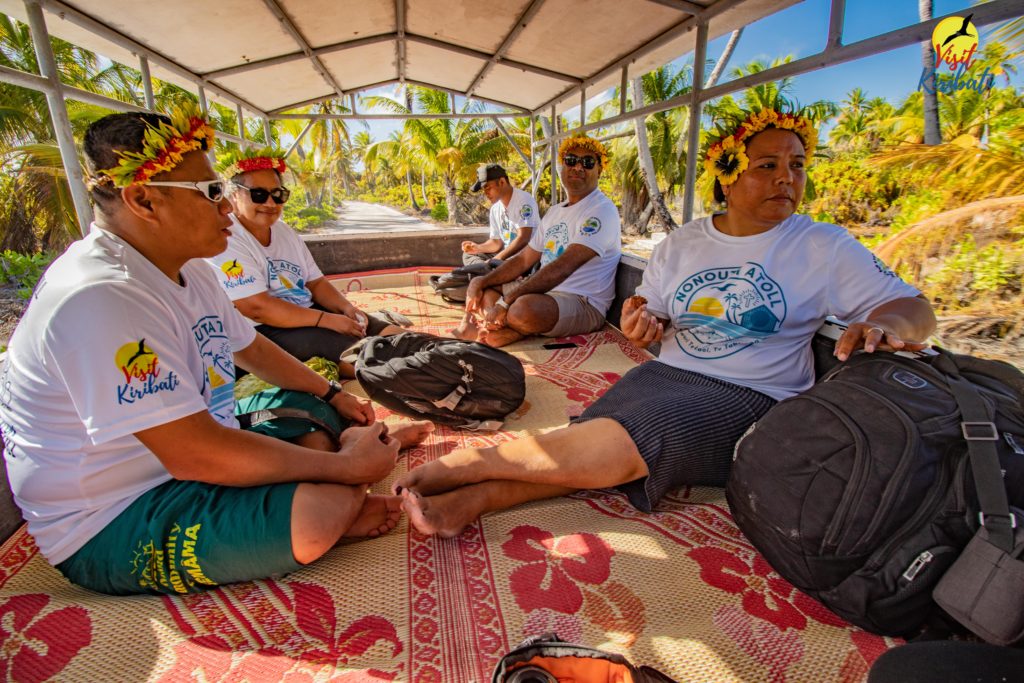
Where is Nonouti?
Nonouti island is the third-largest in the Gilbert Group and it is the fifth-largest in the country. It is home to nine villages. The village of Matang serves as the government center for the atoll and houses the local island council, the police station and a hospital.
The island is where the Roman Catholic Church was first established in Kiribati in 1888 and a monument commemorating this historical part of the country’s history can be found Taribo at Taboiaki Village.
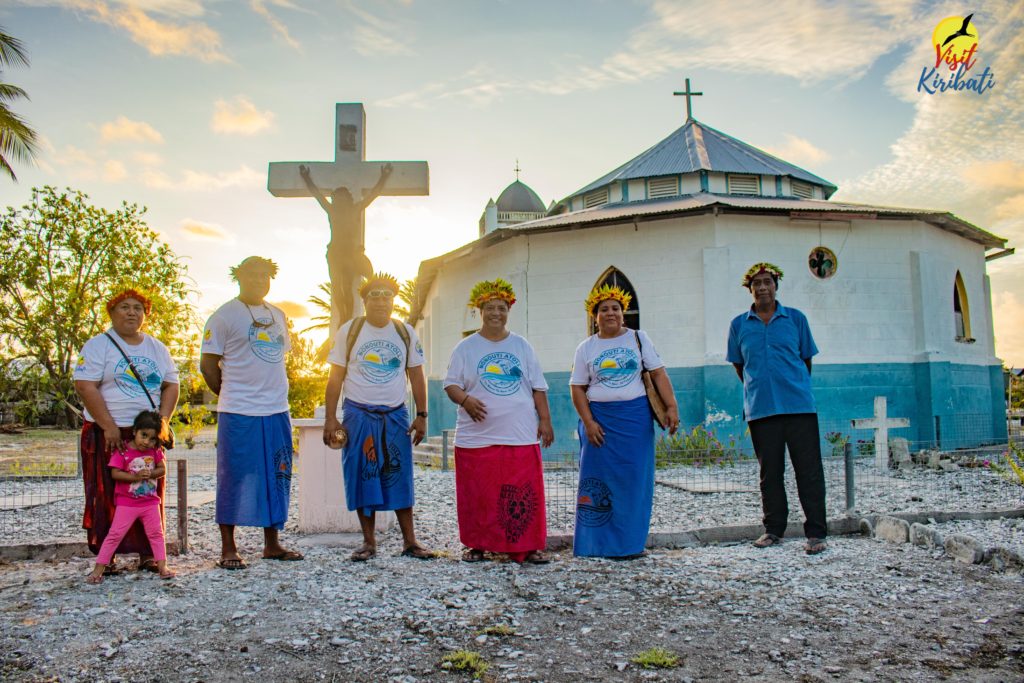
Nonouti Island is also home to the largest and oldest Maneaba in all of Kiribati. Called “te Aake” (the ark), it was built as a symbol of the first arrival of Christianity to Kiribati through Roman Catholic church.
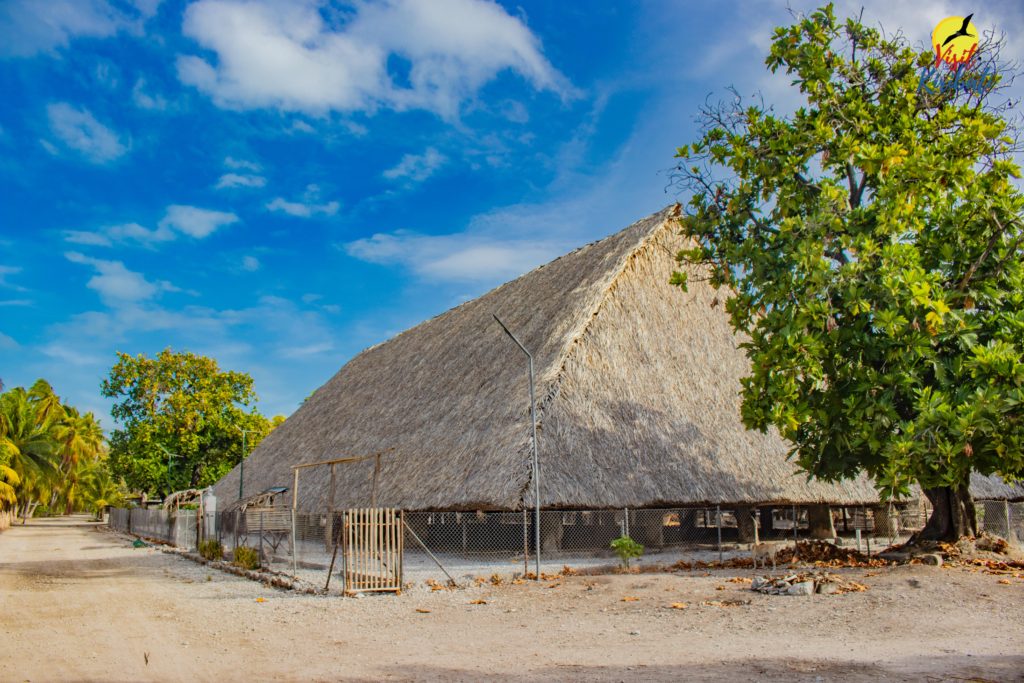
Nonouti Island Council Guesthouse
This is the only accommodation currently available on the island and is managed by the Nonouti Island Council. Nei Bwaranika, the guesthouse manager and her colleagues welcomed us and conducted a very thorough briefing on the property. “This guesthouse is powered by solar energy, but we will not hesitate to penalise you if you forget to turn the fan off when you leave room” she said. As a former hotelier myself, I knew this young lady meant business and that she will not disappoint in delivering acceptable service. And I was not wrong at all.
The guesthouse is well kept and clean. The main accommodation building boasts two wings with the dining and common room at the centre. Each wing features a 1 double room and 2 single rooms, each with a shared bathroom and toilet. In my room, I was quite pleased to see that I had my own wardrobe with large mirrors on either sides and enough storage space for all my clothes.
Bath towels are not provided however bathroom amenities are. It is recommended to bring your own soap and amenities if you are particular with the brands you use.
Within the compound of the guesthouse are 7 traditional buia’s with local beds (and a comfortable mattress). Mosquito nets can be provided upon request. An electric fan is provided in all rooms though the ocean side facing rooms enjoy a cool breeze, particularly at night.
After an official welcome and buffet dinner hosted by the Nonouti Island Council, we retired for the evening with much anticipation of our activities the following day.
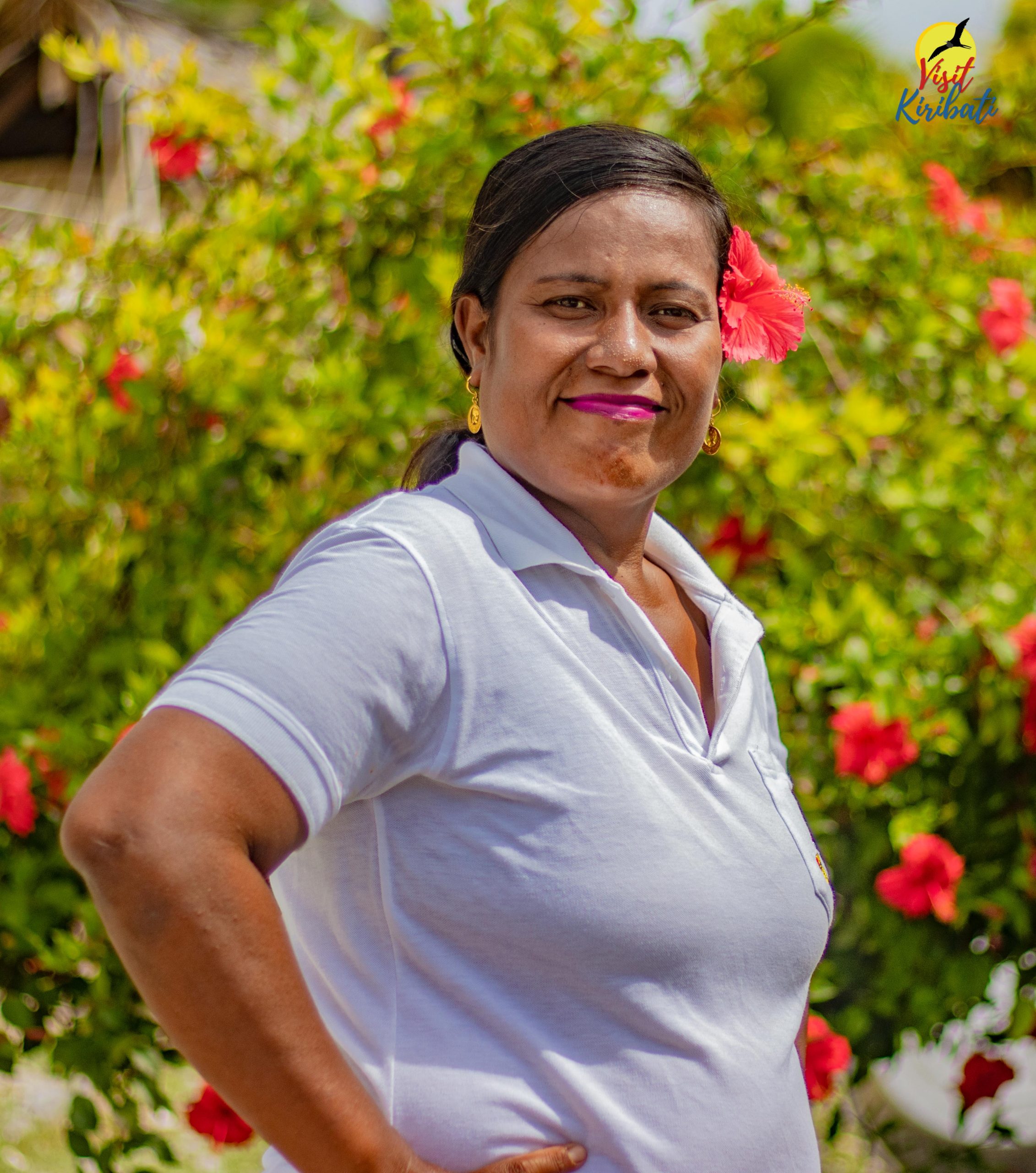
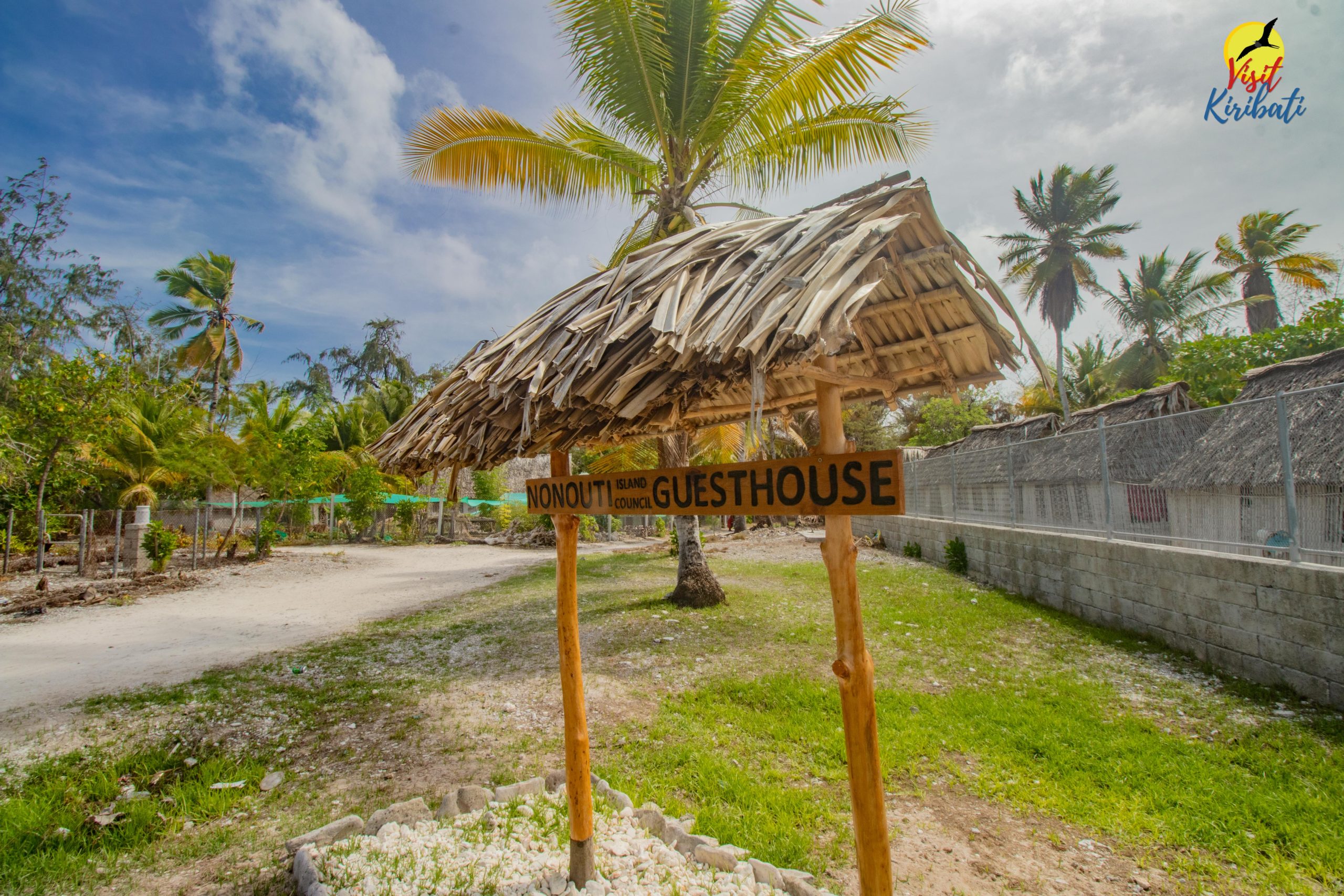
Flyfishing Tour
My alarm went off at 5am and after quick shower and organising my kit for the day, I joined the rest of the group in our open truck and we made our way to board our boat, some 35 minutes aways.
As part of the tour, the guesthouse prepared a breakfast and lunch pack with fruits and bottled water for group. We had our breakfast before we boarded 3 separate boats.
Taam, our local fishing guide came highly recommended as the best on the island. Once onboard our allocated boats, we followed Taam’s dingy across the turquoise lagoon to the fishing flats.
First stop was Noumwatong, the western most islet in Nonouti. Approaching the islet was surreal. Its brilliant white sandy beach and extended sandbanks make for a perfect Luxury magazine shot.
On the island, Taam our guide took us through the basic fly-fishing techniques. I realised then that fly fishing experts make this process look so simple and I was not going to master the art anytime soon. None the less, we moved on to our first fishing site on the beach.
Later we moved on to the fishing flats as the tide went out and then concluded our tour on the sand banks.
Bonefish were clearly abundant, even close up to the beach but my amateur skills got the better of me. In any case it would be inconsiderate of me to out fish our guide so we allowed him do all the catching, while we did the honourable work of releasing each catch.
We completed our fishing expedition just as the tide was coming in and we made our way to our next stop.
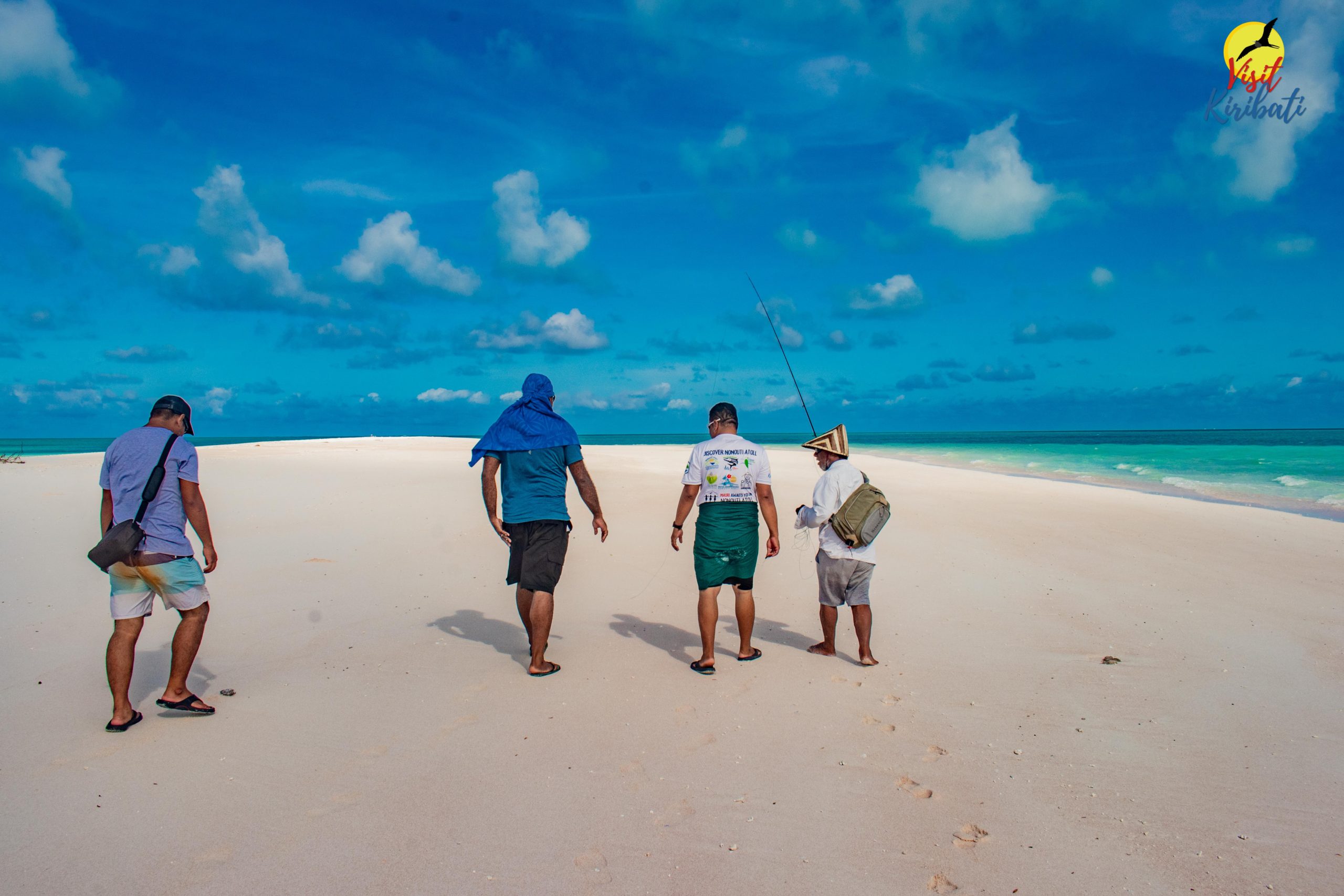
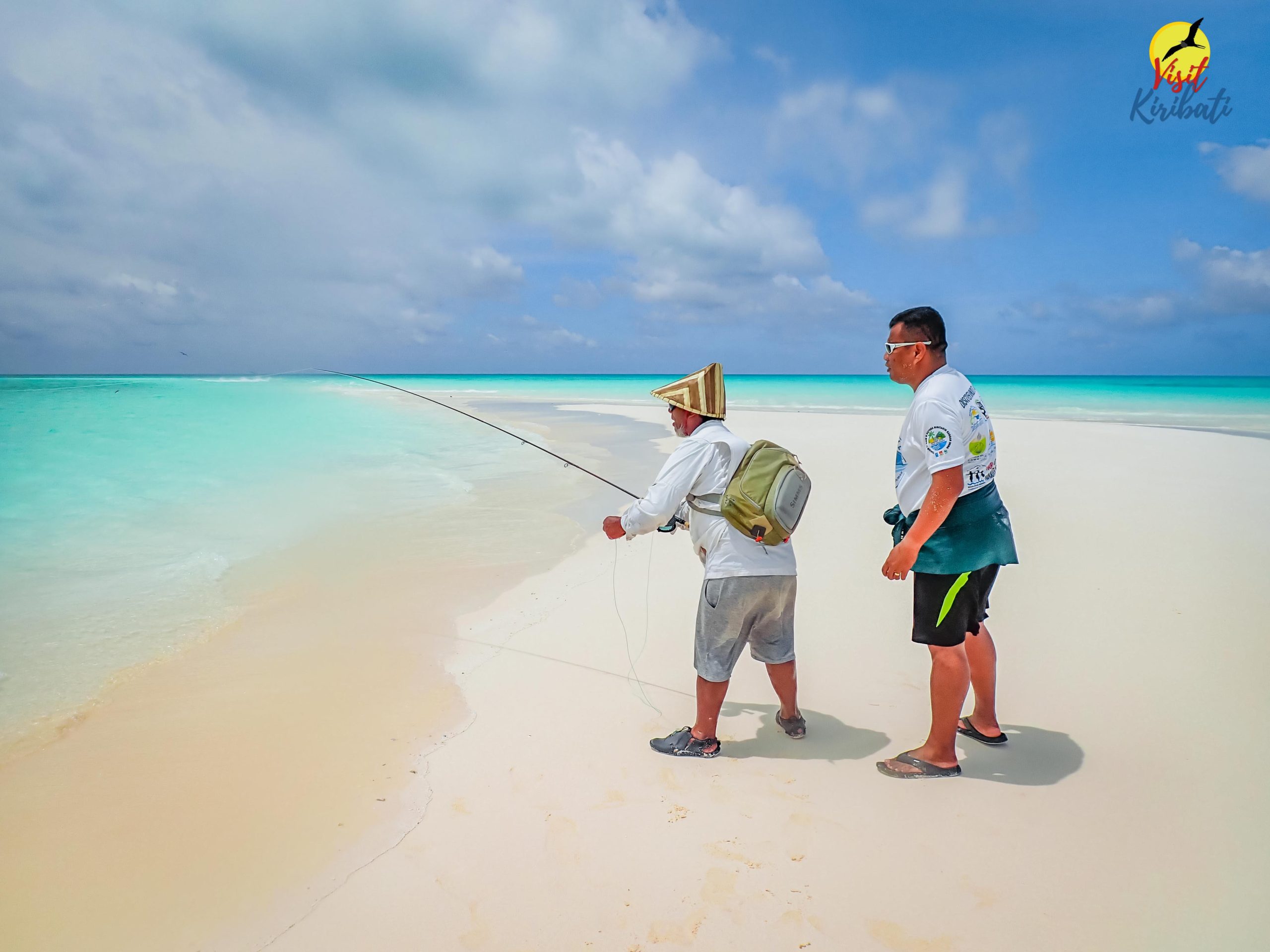
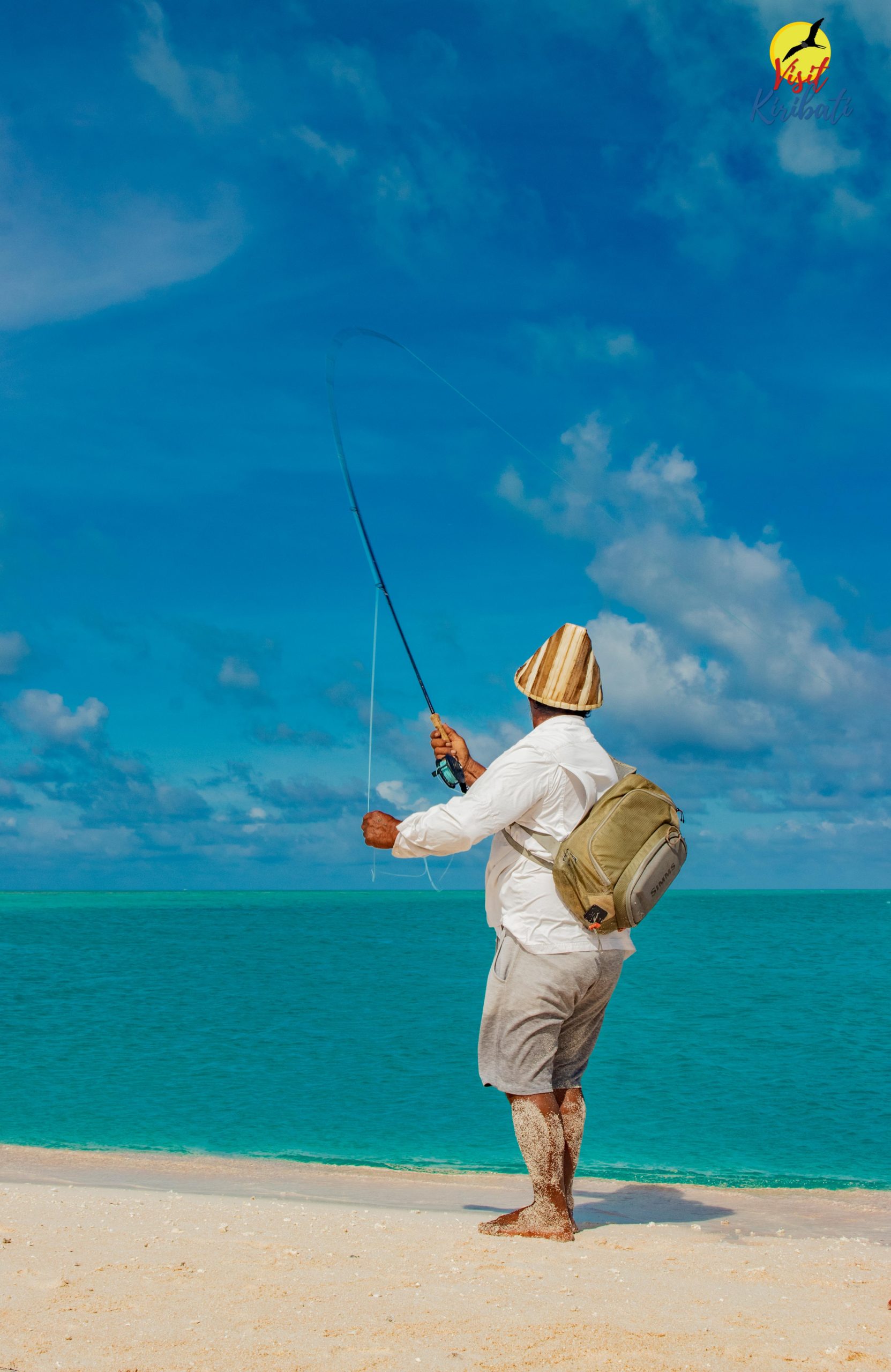
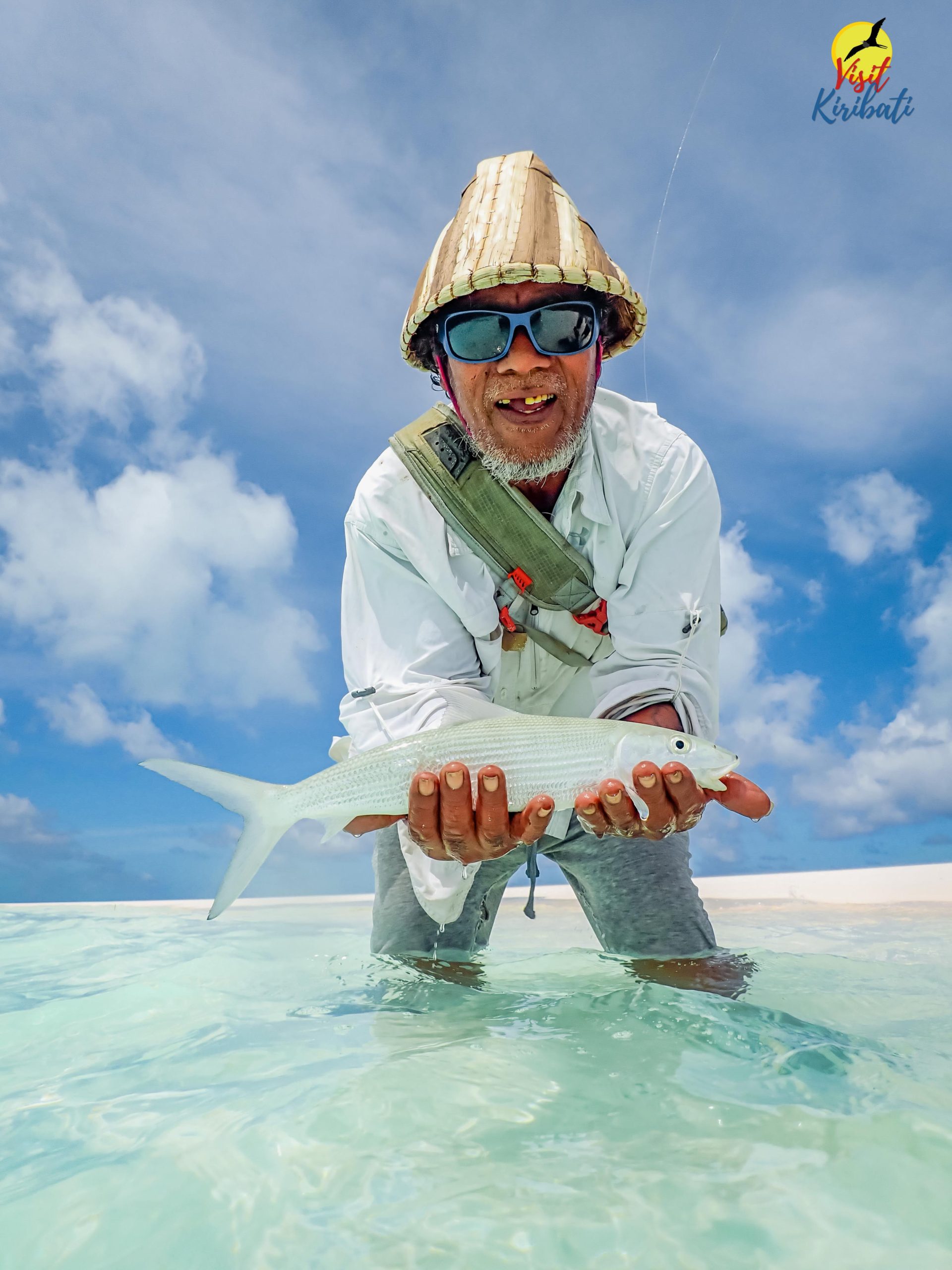
MPA and Reef to Fork Tour – Autukia Community
The huge appetite we had built from the morning out at sea made the MPA tour a welcome relief as we had received hints that a unique sumptuous local dish awaited us.
Autukia community is well known throughout Nonouti for their ibunroro – a local delicacy made from fresh sea shell meat cooked in an intricately carved out young coconut shell over an open fire. The result is a creamy blend of ocean goodness and coconut milk freshness with a distinct burnt aroma that is pleasing to the tastebud. Yummy does little to best describe this dish.
Just when we were done, came crab meat freshly cooked in coconut milk and presented in the crab shell. It was from this moment that I realised that Nonouti will be my second Kiribati home – their food got me.
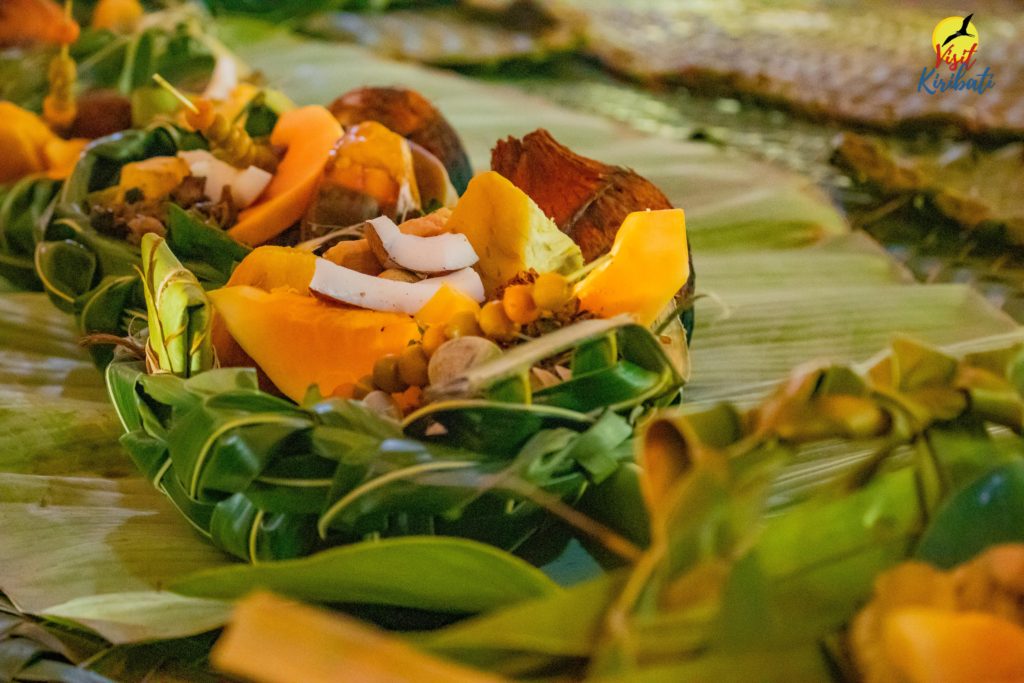
By the way, the stop at Autukia village included an MPA and clam farm tour and Te ibunroro cooking demonstration.
We concluded this tour just as the picturesque sunset was retiring over the horizon, the perfect que to also retire to a well-deserved rest from our adventurous day.
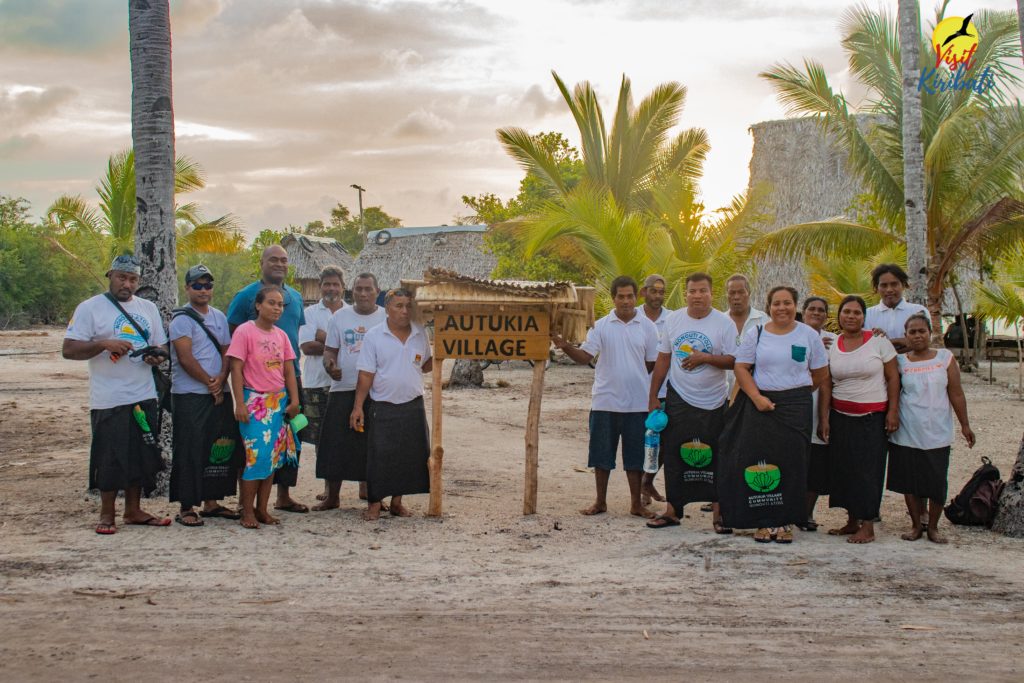
Abamwakoro Islet Tour
We were awoken at 5.30am the next morning by our ever so diligent host Nei Bwaranika to prepare for a 6am departure for our last organised tour of Nonouti’ s Northern Islet, Abamwakoro.
With breakfast packed, and in true Kiribati time fashion, we departed the guesthouse late at 6.30am for a 1-hour drive to our drop off point. It was ‘breakfast on the go’ so the onboard dining experience coupled to TAK Chairman Tabotabo Auatabu’ s tales made the drive seem shorter than it really was.
Once at the drop site, we divided ourselves amongst the 3 fibreglass boats that awaited us and slowly made our way out to the direction on Abamwakoro village, the northern most inhabited islet in Nonouti.
Beaches on the lagoon side across all atolls in Kiribati dry up at low tide and Abamwakoro was no exception. And because of our late departure from the guesthouse, we were all treated to an early morning powerwalk from where the tide had receded to, to the beach. This was a good 20 minutes’ walk and I had no time to complain as the sight of a traditional Kiribati village, literally stuck in time, presenting itself over the horizon built my excitement for the experience that awaited us. And time travel it surely was.
On arrival, we were welcomed by the village choir singing a familiar Kiribati tune, which against the village backdrop made the experience genuine and authentic.
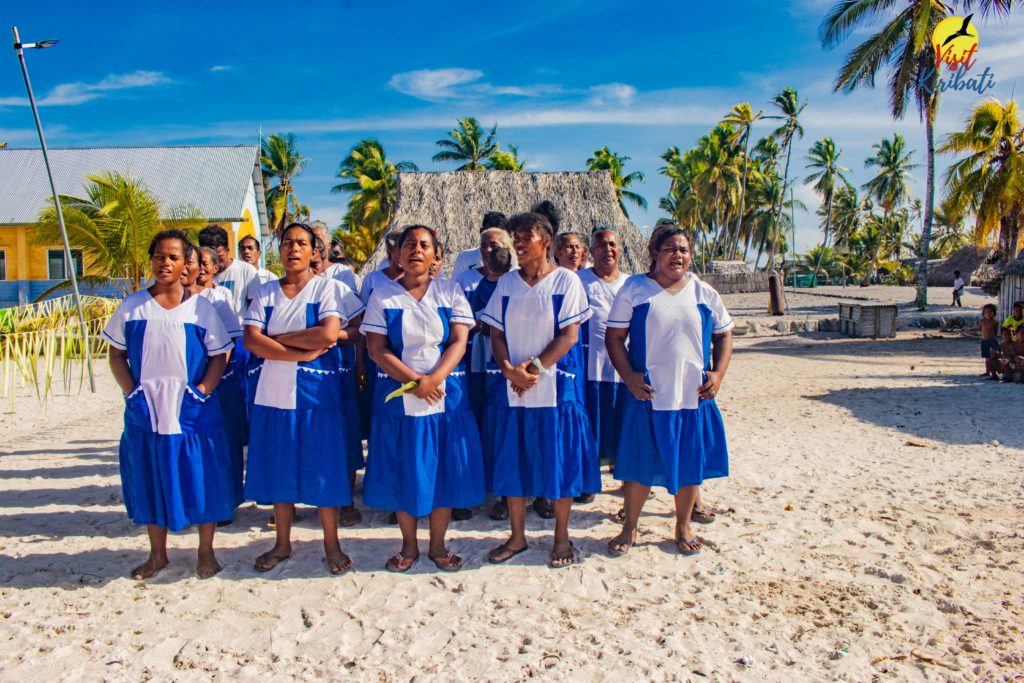
We were ushered to a buia where we were served refreshing moimoto (fresh coconut juice) and a light morning tea of crabs, sundried sand worms (te Ibo) and fish with boiled breadfruit.
Following this we were invited to join the village in a Sunday service led by the local Roman Catholic Catechist.
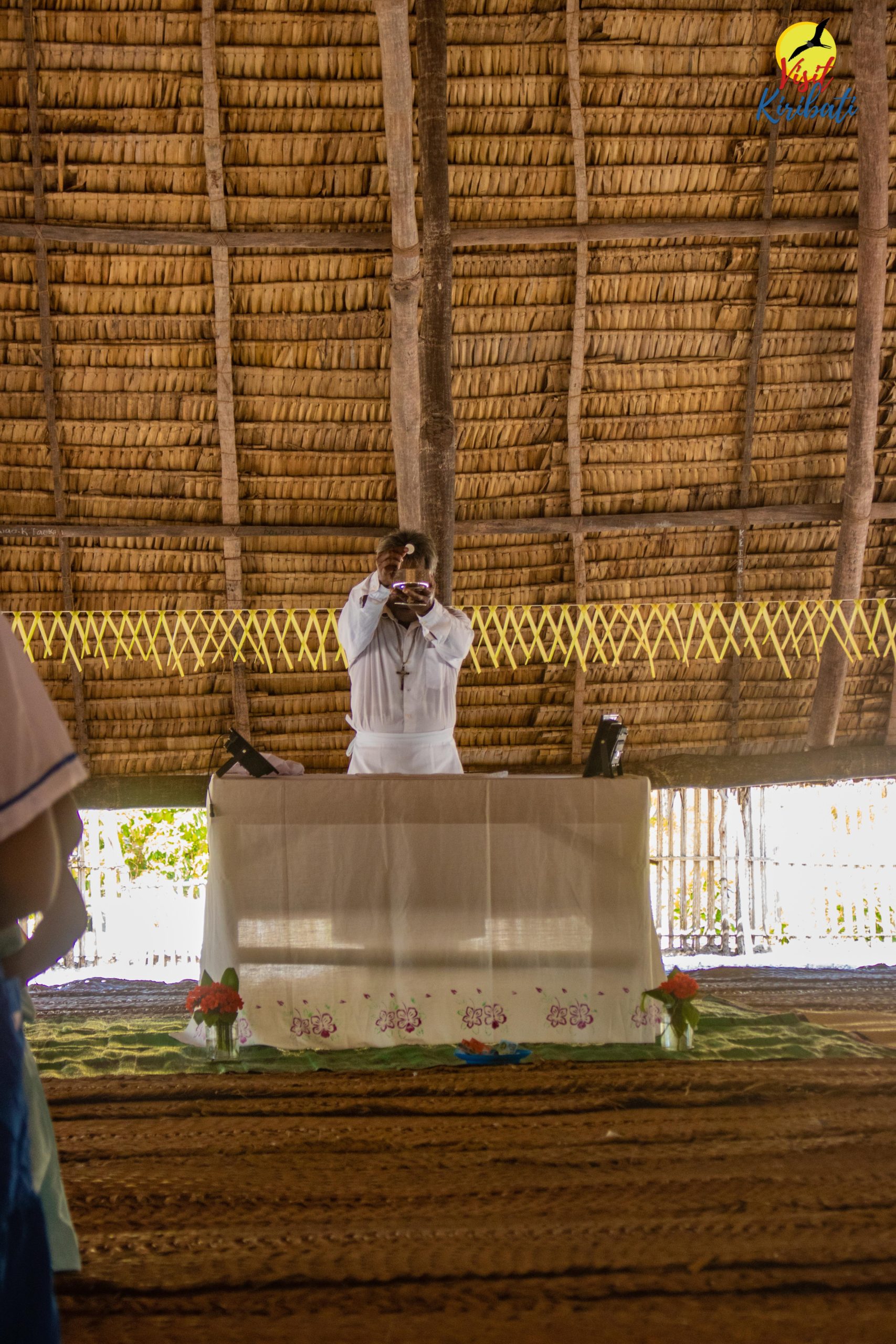
From the Sunday service, a local elder led us on tour of the village, their local school called Teitikinikarawa Primary School and walk through the Northern end of the village to the passage which also serves as a swimming spot for the villagers.
The classrooms, built entirely from coconut leaf stem and pandanus posts and leaves with crushed coral floor was a picture-perfect resemblance of a setting from the early 1900’s. It was quite humbling to recognise that the children of Abamwakoro received their education in such a special setting.
Upon our return to the village, we were invited back into the maneaba where a lunch feast of local delicacies awaited us. This however did not begin without the formal welcome by village elders and an opportunity to engage with them in a maroro, which typically included formal introductions and a storytelling session.
Soon it was time to leave and so we all retuned to our respective boats which were now anchored right on the beachfront, thanks to the returning tide.
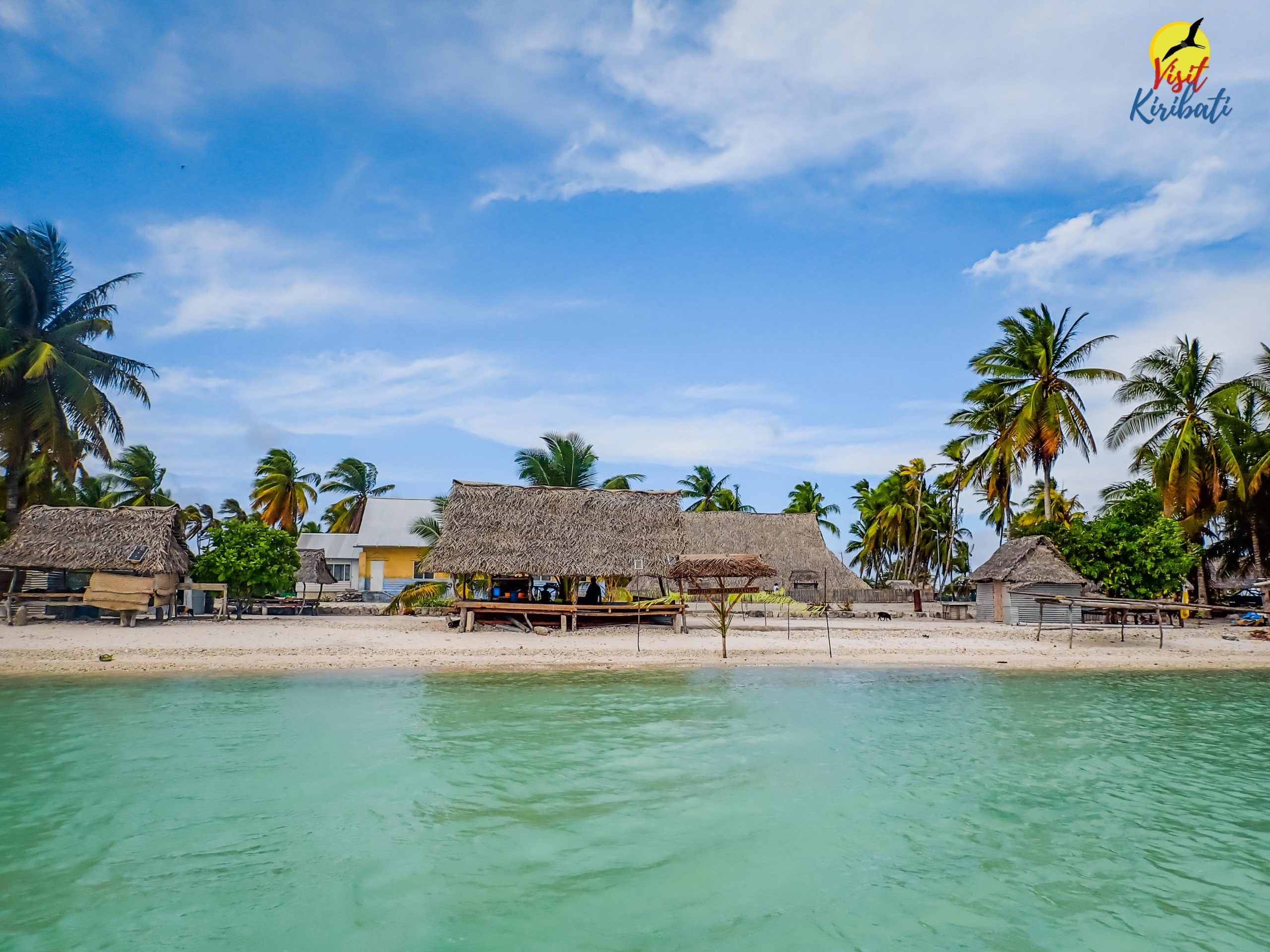
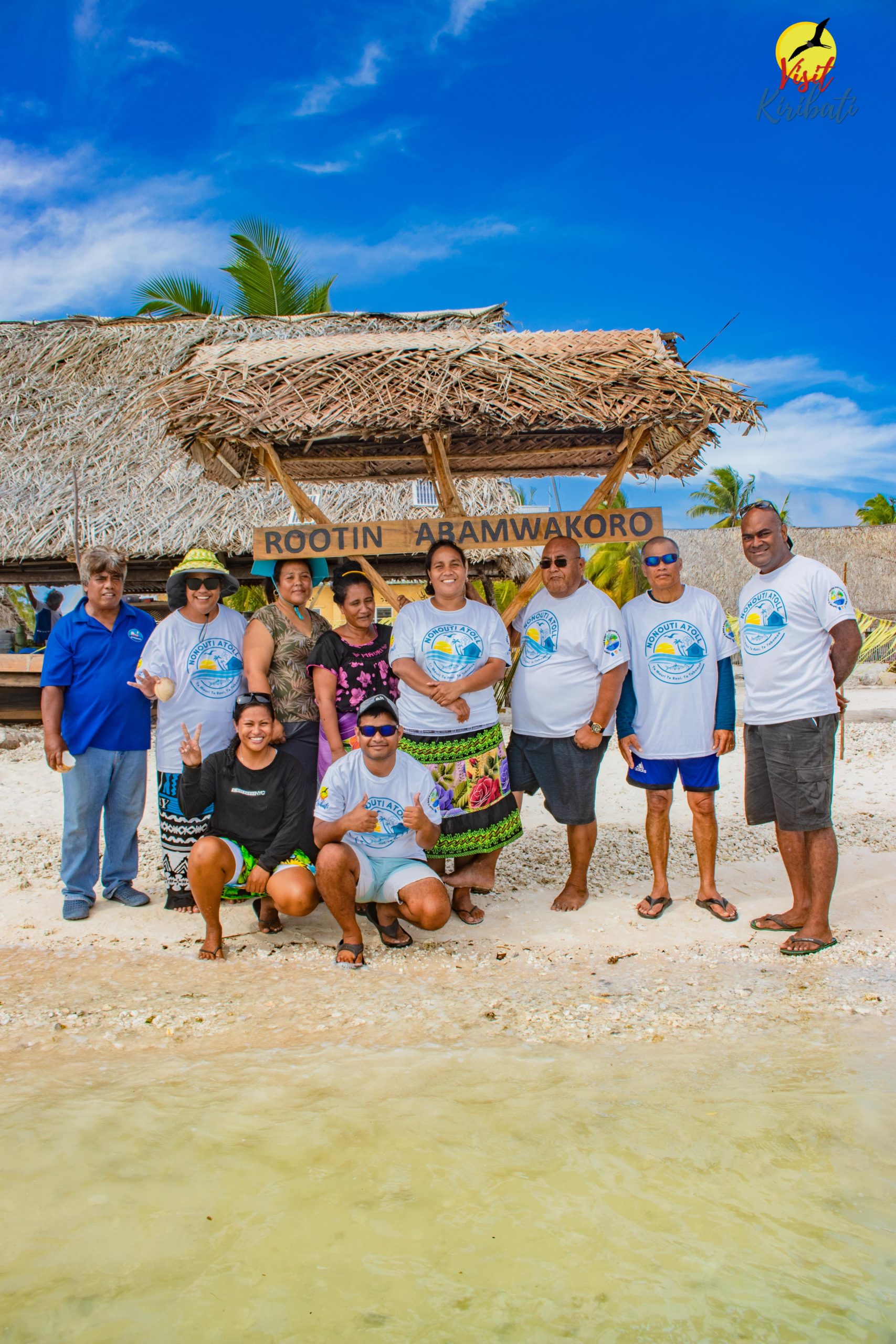
Noumwatong Bird Sanctuary Tour
From Abamwakoro, it was a short 1-hour boat ride across to the Noumwatong bird sanctuary.
The white sandy beaches of Noumwatong made arrival onto the island surreal. It is a scenic gem of unsurpassed beauty home only to one of the largest collection of harbor black and white noddies, terns and frigate birds.
Our young tour guide mentioned that this was the bird nesting season and so we were very careful not to disturb or step on their eggs.
One can expect bird dropping on them during this tour and count that as a blessing and indeed I was blessed, more than once. That of course is all part of the experience.
With group photo to celebrate the completion of our last activity on our itinerary, we were back on our boats and made out way back to our accommodation.
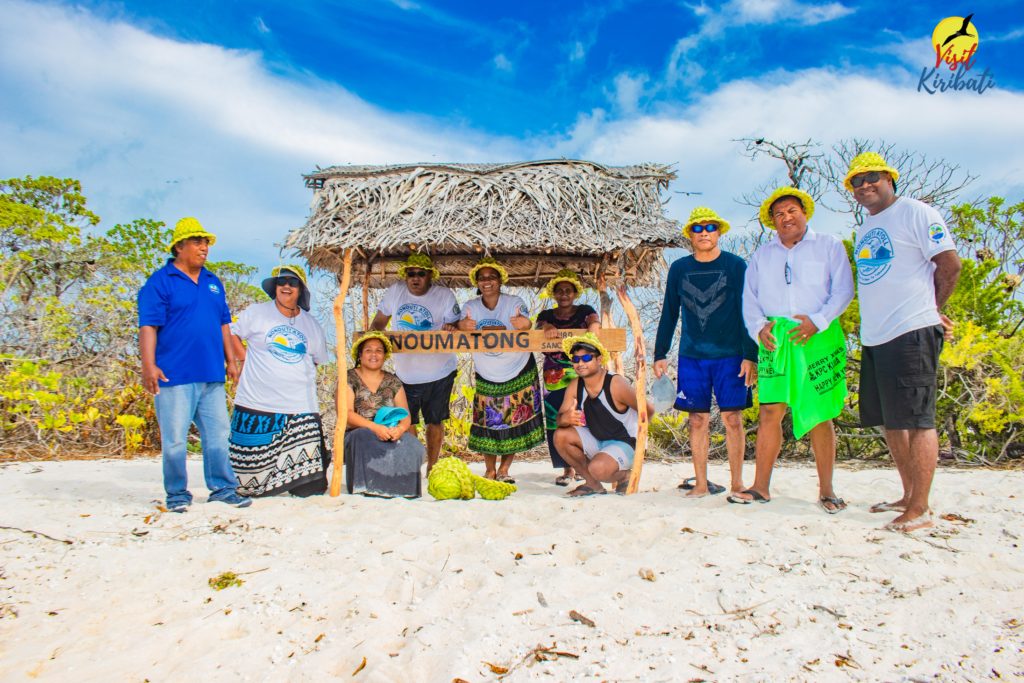
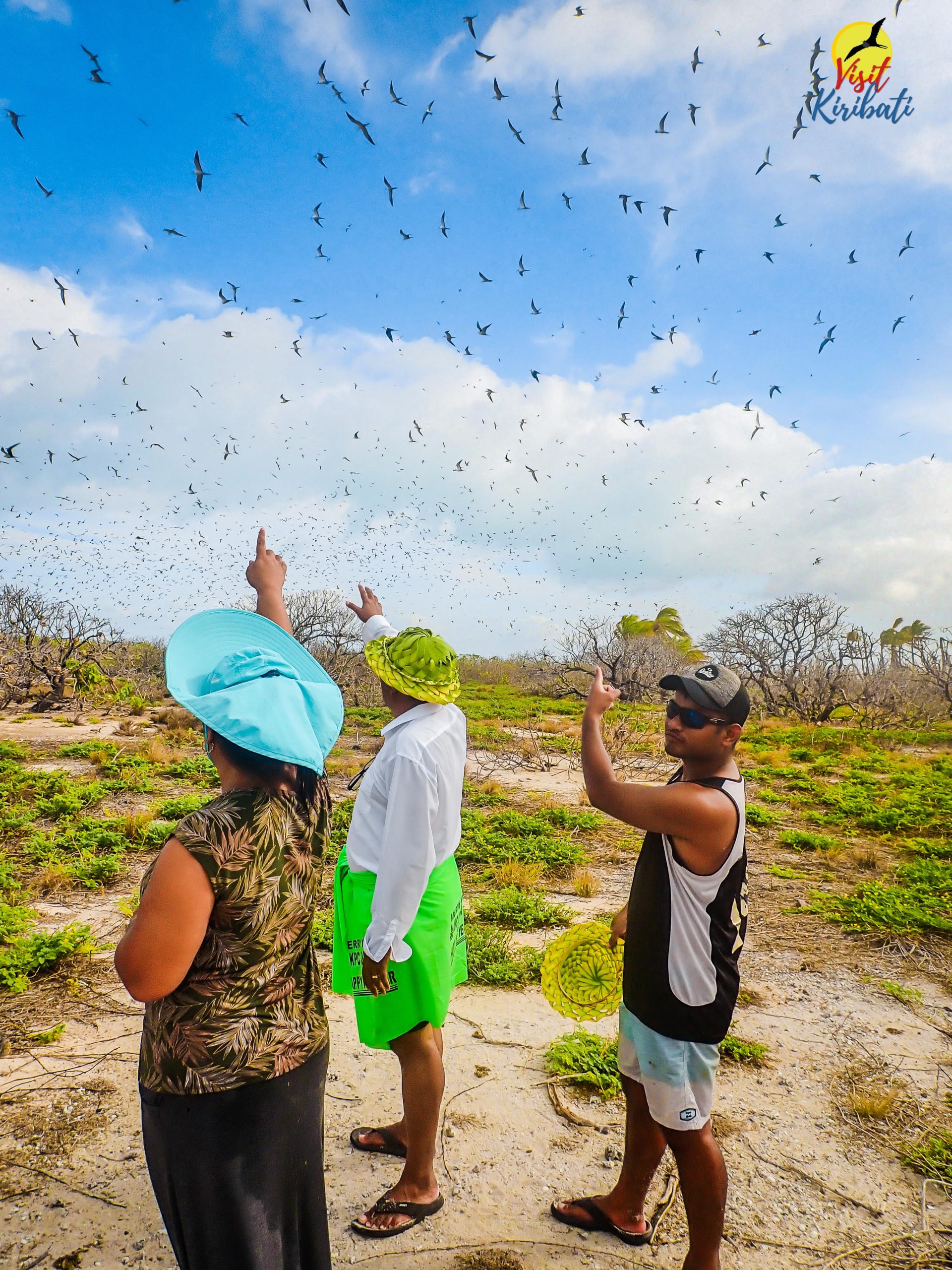
Return is a must
This was my first visit to Nonouti but this will certainly not be my last. I have enjoyed every bit of this off the beaten track experience and yearn to one day return and savour every moment again of the Nonouti Island hospitality.
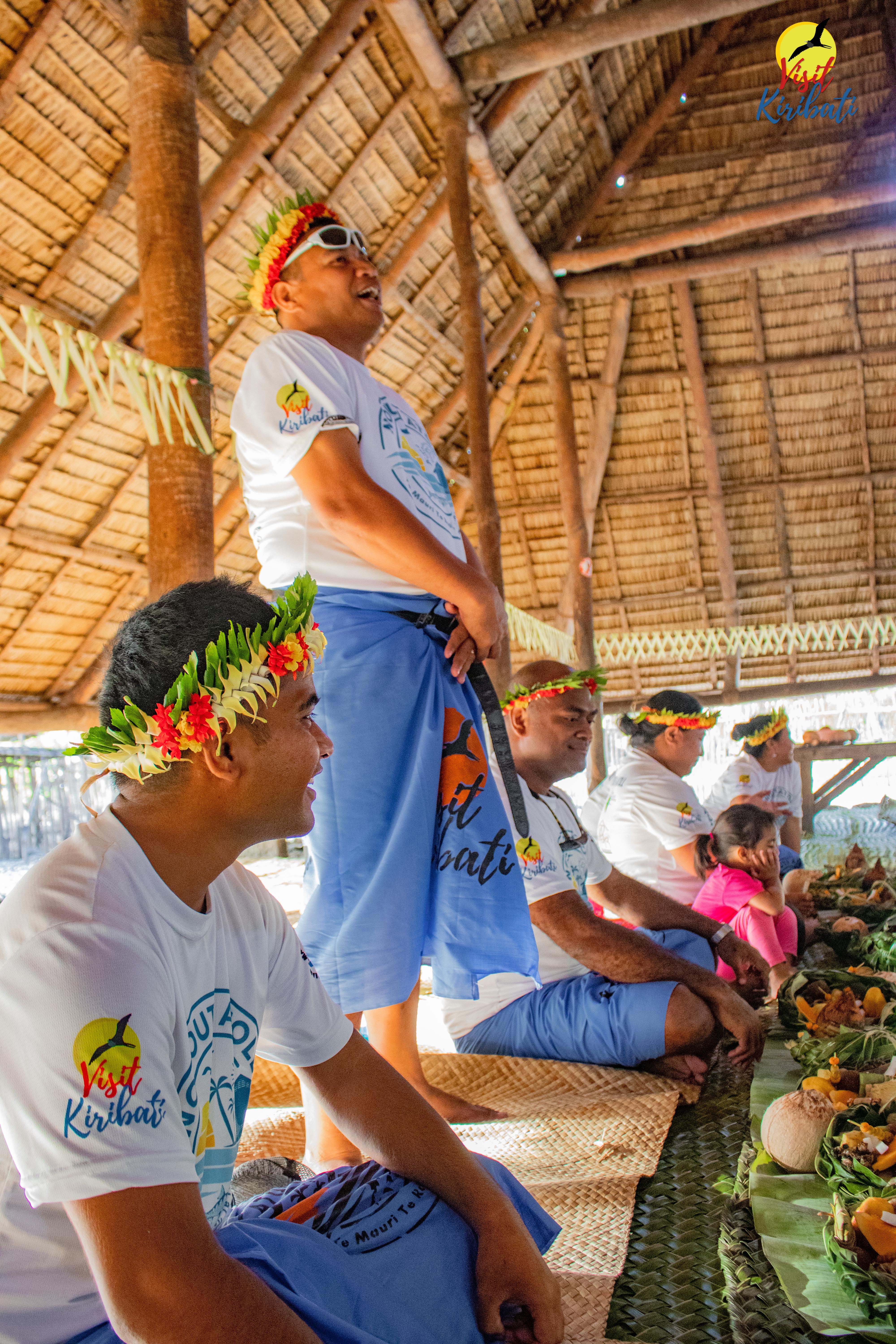
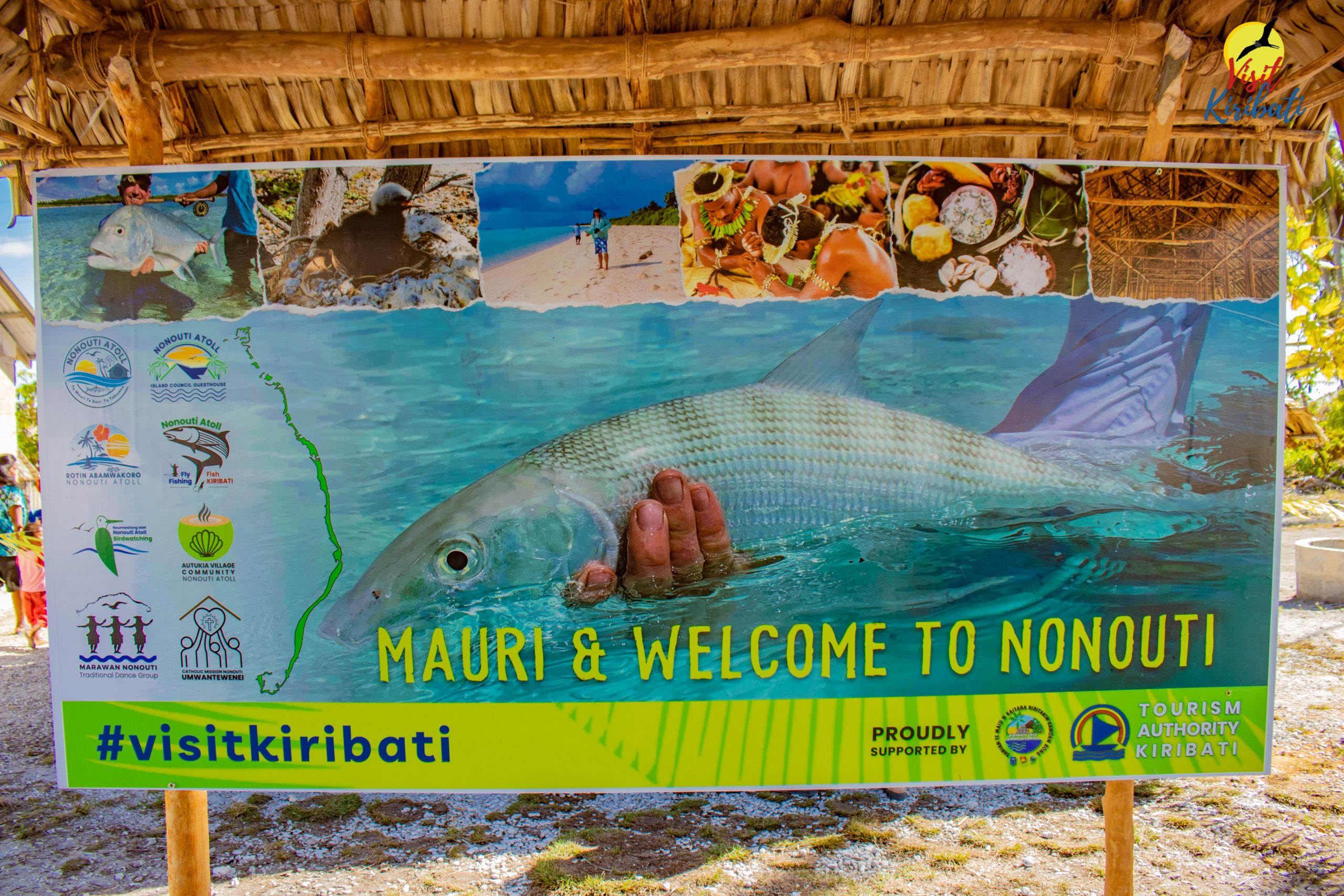
About the Traveller
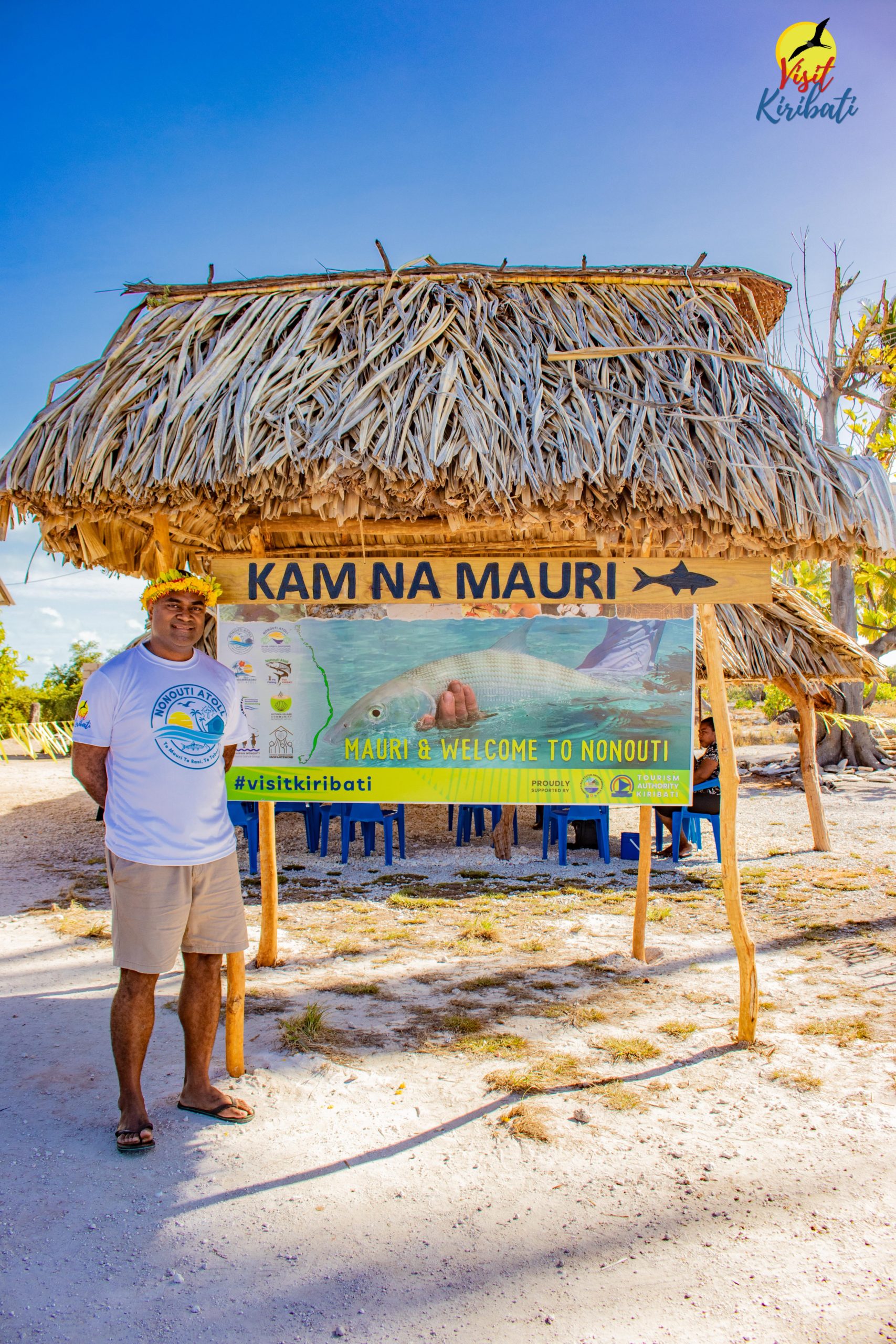
Petero Manufolau is the Chief Executive Officer of the Tourism Authority of Kiribati. Through his work, Petero has been blessed with the wonderful opportunity to experience Kiribati hospitality throughout her islands. These include Butaritari, Abaiang, North Tarawa, Banaba, Abemama, Kiritimati and now Nonouti.
